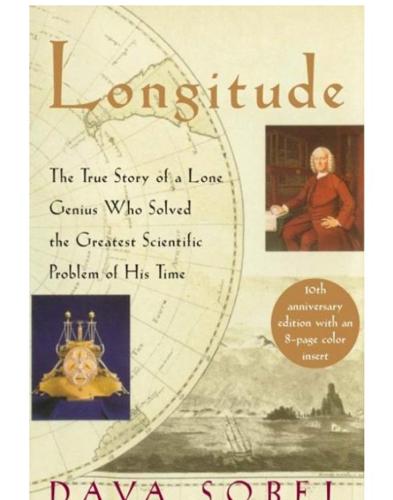
Longitude
by
Dava Sobel
Published 1 Jan 1995
Admiral Lord Anson. London: Cassell, 1960. Quill, Humphrey. John Harrison, the Man Who Found Longitude. London: Baker, 1966. —. John Harrison, Copley Medalist, and the £20,000 Longitude Prize. Sussex: Antiquarian Horological Society, 1976. Randall, Anthony G. The Technology of John Harrison’s Portable Timekeepers. Sussex: Antiquarian Horological Society, 1989. Vaughn, Denys, ed. The Royal Society and the Fourth Dimension: The History of Timekeeping. Sussex: Antiquarian Horological Society, 1993. Whittle, Eric S. The Inventor of the Marine Chronometer: John Harrison of Foulby. Wakefield, England: Wakefield Historical Publications, 1984.
…
The 1707 incident, so close to the shipping centers of England, catapulted the longitude question into the forefront of national affairs. The sudden loss of so many lives, so many ships, and so much honor all at once, on top of centuries of previous privation, underscored the folly of ocean navigation without a means for finding longitude. The souls of Sir Clowdisley’s lost sailors— another two thousand martyrs to the cause—precipitated the famed Longitude Act of 1714, in which Parliament promised a prize of £20,000 for a solution to the longitude problem. In 1736, an unknown clockmaker named John Harrison carried a promising possibility on a trial voyage to Lisbon aboard H.M.S.
…
When he had thought out the novel contraption to his own satisfaction, which took him almost four years, he set off for London—a journey of two hundred miles—to lay his plan before the Board of Longitude. 8. The Grass hopper Goes to Sea Where in this small-talking world can I find A longitude with no platitude? —CHRISTOPHER FRY, The Lady’s Not for Burning When John Harrison arrived in London in the summer of 1730, the Board of Longitude was nowhere to be found. Although that august body had been in existence for more than fifteen years, it occupied no official headquarters. In fact, it had never met. So indifferent and mediocre were the proposals submitted to the board, that individual commissioners had simply sent out letters of rejection to the hopeful inventors.
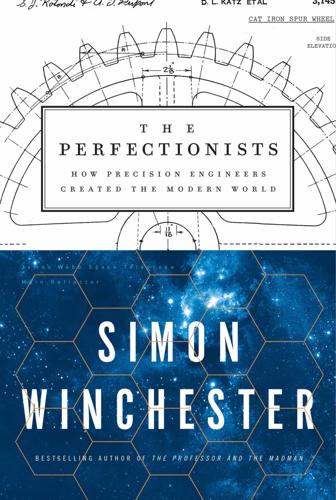
The Perfectionists: How Precision Engineers Created the Modern World
by
Simon Winchester
Published 7 May 2018
.* And none was more sedulously dedicated to achieving this degree of exactitude than the Yorkshire carpenter and joiner who later became England’s, perhaps the world’s, most revered horologist: John Harrison, the man who most famously gave mariners a sure means of determining a vessel’s longitude. This he did by painstakingly constructing a family of extraordinarily precise clocks and watches, each accurate to just a few seconds in years, no matter how sea-punished its travels in the wheelhouse of a ship. An official Board of Longitude was set up in London in 1714, and a prize of twenty thousand pounds offered to anyone who could determine longitude with an accuracy of thirty miles. It was John Harrison who, eventually and after a lifetime of heroic work on five timekeeper designs, would claim the bulk of the prize.
…
Over the entire 147 days of a voyage that involved a complex and unsettling stormy return journey (in which William Harrison had to swaddle the timekeeper in blankets), the watch error was just 1 minute 54.5 seconds, a level of accuracy never imagined for a seaborne timekeeping instrument. And while it would be agreeable to report that John Harrison then won the prize for his marvelous creation, much has been made of the fact that he did not. The Board of Longitude prevaricated for years, the Astronomer Royal of the day declaring that a much better way of determining longitude, known as the lunar distance method, was being perfected, and that there was therefore no need for sea clocks to be made. Poor John Harrison, therefore, had to visit King George III (a great admirer, as it happens) to ask him to intercede on his behalf.
…
So the decision of the observatory principals over the years has been to keep this one masterpiece in its quasi-virgin state, much like the unplayed Stradivarius violin at the Ashmolean Museum in Oxford,* as an untouched testament to its maker’s art. And what sublime pieces of mechanical art John Harrison made! By the time he decided to throw his hat in the ring for the longitude prize, he had already constructed a number of fine and highly accurate timekeepers—most of them pendulum clocks for use on land, many of them long-case clocks, each one more refined than the last. Harrison’s skills lay in the imaginative improvement of his timekeepers, rather than in the decorative embellishment that many of his eighteenth-century contemporaries were known for.
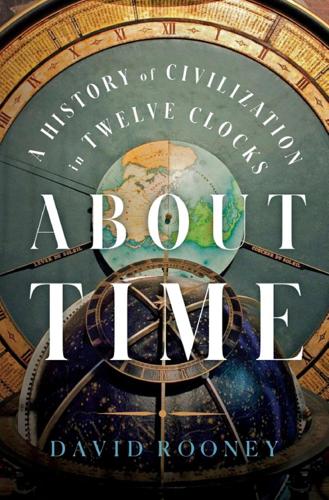
About Time: A History of Civilization in Twelve Clocks
by
David Rooney
Published 16 Aug 2021
In March 1714, during her speech at the state opening of Britain’s Parliament, Queen Anne exclaimed that “this Country can Flourish only by Trade; and will be most Formidable, by the right Application of our Naval Force.”12 The following month a group of merchants and sea captains responded to her call with a petition to the government, in which they said that: nothing can be either at home or abroad, more for the common Benefit of Trade and Navigation, than the Discovery of the Longitude at Sea which has been so long desired in vain, and for want of which so many Ships and Men have been lost.13 The answer, they said, was a reward scheme, and just three months later the government passed an act founding a Board of Longitude that offered £20,000 to anybody who could solve the problem to half a degree. It took half a century for the British prize fund to bear fruit, and then it did so twice. By the late 1750s, John Harrison had completed a mechanical timekeeper (later known as a chronometer) that kept time well enough to win the reward money and coped with the rough conditions at sea.
…
She was instantly laid down on her side, the quarter-deck guns driven furiously over-board, and the sails in a moment split to pieces.3 Yet there was no alternative, because suitable ports were in short supply on Africa’s southern coastline. Navigating safely round the continent demanded the highest skill and the best technology and, by the time the British planted their flag on the Cape, the best navigational technology meant marine chronometers, highly accurate timekeepers first developed by John Harrison in the 1750s, that offered a fixed time reference from which longitude could be calculated once at sea. Crucial to the process of chronometer navigation was access to accurate time signals during stays in ports, so that officers could check their shipboard chronometers and set them to time. And in an age before radio, these coastal time signals themselves needed access to accurate time, either from a nearby astronomical observatory or, as electric telegraph networks began to be built from the 1840s onward, from a telegraph time service that linked back to an observatory elsewhere.
…
Once Ernst Jechart and Gerhard Hübner’s miniature atomic clocks became available in 1972, it seemed that the problem had been solved, and the 1974 NTS-1 satellite trial that carried their clocks went well. But engineers knew that the clocks destined for GPS satellites would need to be much more rugged to keep ticking without fail for years on end as the satellites orbited Earth. It was like the eighteenth-century longitude problem all over again. Then, John Harrison had to find ways to miniaturize existing timekeeping technology while also increasing its accuracy, precision and long-term reliability. At the same time, he needed to harden his new timekeepers against the hostile conditions of a long sea voyage such as violent movement and temperature fluctuations.
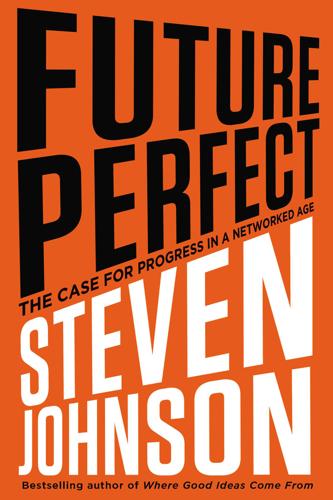
Future Perfect: The Case for Progress in a Networked Age
by
Steven Johnson
Published 14 Jul 2012
Countless stories of innovation from the period involve a prize-backed challenge. During the century that followed that first coffeehouse meeting, the RSA alone disbursed what would amount to tens of millions of dollars in today’s currency. John Harrison’s invention of the chronometer, which revolutionized the commercial and military fleets of the day, was sparked by the celebrated Longitude Prize, offered by the Board of Longitude, a small government body that had formed with the express intent of solving the urgent problem of enabling ships to establish their longitudinal coordinates while at sea. Not all premiums were admirable in their goals: William Bligh’s ill-fated expedition to Tahiti aboard the Bounty began with an RSA premium awarded to anyone who could successfully transport the versatile breadfruit plant to the West Indies to feed the growing slave populations there.
…
Once a premium had been established—and the reward publicly announced—the prize money created a much larger pool of minds working on the problem. John Harrison’s story, powerfully recounted in Dava Sobel’s bestselling Longitude, demonstrates how a prize-backed challenge extends and diversifies the network of potential solutions. Born in West Yorkshire, Harrison was the son of a carpenter, with almost no formal education, and notoriously poor writing skills. When he began working on his first iteration of the chronometer, his social connections to the elites of London were nonexistent. But the £20,000 offered by the Board of Longitude caught the attention of his brilliant mechanical mind.
…
On the innovation threat posed by intellectual property restrictions, see Lawrence Lessig’s The Future of Ideas, and my own Where Good Ideas Come From. Ayn Rand’s views on patents come from an essay, “Patents and Copyrights,” included in the collection Capitalism: The Unknown Ideal. John Harrison’s story is told in Dava Sobel’s popular Longitude: The True Story of a Lone Genius Who Solved the Greatest Scientific Problem of His Time. Beth Noveck’s inspirational work with crowdsourced patent review, dubbed “peer to patent,” is described in her WikiGovernment. For more on Jon Schnur and the origin and implementation of the Race to the Top program, see Steve Brill’s entertaining Class Warfare: Inside the Fight to Fix America’s Schools.

Sextant: A Young Man's Daring Sea Voyage and the Men Who ...
by
David Barrie
Published 12 May 2014
Voyage de La Pérouse autour du monde. 4 vols and atlas. Paris: Imprimerie de la République. Mixter, G. W. (1960). Primer of Navigation (4th ed.). Princeton, NJ: Van Nostrand. Norie, J. W. (1839). A Complete Epitome of Practical Navigation. London: J. W. Norie. Quill, H. (1966). John Harrison: The Man Who Found Longitude. London: John Baker. Raban, J. (2000). Passage to Juneau: A Sea and Its Meanings. London: Picador Raper, L. H. (1840). The Practice of Navigation and Nautical Astronomy. London: R. B. Bate. Ritchie, R. A. (1967). The Admiralty Chart: British Naval Hydrography in the Nineteenth Century.
…
She fired a gun and showed lights to warn the ships astern of her of the impending danger: [The land] being but two miles distant, we were all under the most dreadful apprehensions of running on shore; which, had either the wind blown from its usual quarter [south-west] with its wonted vigour, or had not the moon suddenly shone out, not a ship amongst us could possibly have avoided. . . .13 One officer recalled seeing the cliffs rearing up “like two black Towers of an extraordinary height,” but every ship managed to get clear.14 Anson’s own log gave the Centurion’s longitude on April 13 as 87°51' W, while another surviving log gives a longitude of 84°12' W just before land was sighted.15 The difference between these estimates is itself an indication of how difficult it was to determine longitude reliably by DR. In fact the longitude of Noir Island is about 73 degrees West, which means that Anson’s estimate was out by nearly 14 degrees—a distance of almost five hundred nautical miles in this latitude.
…
Under the terms of the British Longitude Act of 1714, a sum of up to £20,000 was offered as “a due and sufficient Encouragement to any such Person or Persons as shall discover a proper Method of Finding the said Longitude.” This would now be worth several million pounds. The Longitude Act, however, imposed high standards of accuracy: to win the maximum amount the successful method had to be capable of determining longitude within a margin of error not exceeding half a degree of a great circle (equivalent to thirty nautical miles). Half the maximum prize would be payable when the commissioners of the new Board of Longitude were satisfied that the proposed method extended to “the Security of Ships within Eighty Geographical Miles from the Shores, which are Places of the greatest Danger,” while the balance would be paid “when a ship . . . shall actually Sail over the Ocean, from Great Britain to any such Port in the West-Indies, as those Commissioners . . . shall Choose or Nominate for the Experiment, without Losing their Longitude beyond the Limits before mentioned.”

Adapt: Why Success Always Starts With Failure
by
Tim Harford
Published 1 Jun 2011
The British parliament turned to Sir Isaac Newton and the comet expert Edmond Halley for advice, and in 1714 passed the Act of Longitude, promising a prize of £20,000 for a solution to the problem. Compared with the typical wage of the day, this was over £30 million pounds in today’s terms. The prize transformed the way that the problem of longitude was attacked. No longer were the astronomers of the Royal Observatory the sole official searchers – the answer could come from anyone. And it did. In 1737, a village carpenter named John Harrison stunned the scientific establishment when he presented his solution to the Board of Longitude: a clock capable of keeping superb time at sea despite the rolling and pitching of the ship and extreme changes in temperature and humidity.
…
Pneumococcal infections kill nearly a million young children a year, almost all of them in poor countries. As John Harrison could have attested, the problem with an innovation prize is determining when the innovator has done enough to claim his reward. This is especially the case when the prize is not for some arbitrary achievement, such as being the fastest plane on a given day – remember the Schneider Trophy, which inspired the development of the Spitfire – but for a practical accomplishment such as finding longitude or creating immunity to pneumococcal meningitis. Harrison was caught up in an argument between proponents of the clock method and the astronomical method.
…
The cheap, easy-to-build and effective Hurricanes did indeed outnumber Spitfires in the early months of the war, but it was the Spitfire’s design that won the plaudits. * The Board of Longitude never gave Harrison his prize, but it did give him some development money. The British parliament, after Harrison petitioned the King himself, also awarded the inventor a substantial purse in lieu of the prize that never came. The sad story is superbly told by Dava Sobel in her book Longitude, although Sobel perhaps gives Harrison too much credit in one respect: it is arguable that by producing a seaworthy clock, albeit a masterpiece, he did not solve the longitude problem for the Royal Navy or society as a whole. To do that, he needed to produce a blueprint that a skilled craftsman could use to produce copies of the clock
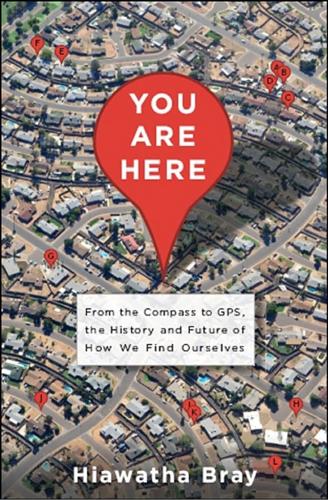
You Are Here: From the Compass to GPS, the History and Future of How We Find Ourselves
by
Hiawatha Bray
Published 31 Mar 2014
The lunar tables prepared by Maskelyne and his colleagues formed the core of a new nautical almanac. Published every year, it became an indispensable guide to the world’s navigators. Eventually Greenwich would become the baseline used by sailors worldwide to calculate longitude. However, the lunar method wasn’t nearly accurate enough for the remarkable man who finally solved the problem for good. British carpenter and self-taught clockmaker John Harrison spent about forty of his eighty-three years of life designing timepieces that could withstand the stresses of a sea voyage while still keeping accurate time. His H4 marine chronometer of 1755 was a near miracle of engineering, losing just a few seconds of accuracy even after months at sea.
…
It depends how far north or south you were. At the equator, 15 degrees of longitude works out to about 1,035 miles of distance, or 69 miles for each degree. But the lines of longitude converge at the North and South Poles, so the distance covered by 15 degrees of longitude gets smaller as you move north or south of the equator. Luckily, a simple formula can be used to calculate the distance, as long as you already know your latitude. And, of course, navigators had already mastered latitude. Thus, if a sailor could nail down the calculation of longitude, he could quickly and accurately figure out his position on any ocean.
…
Yet they suspected that there was a rhyme and reason to such compass errors—and that decoding it would eventually lead to a solution to the previously intractable problem of east-west location: longitude. Some thought that the key had been discovered in 1544. That year, Venetian explorer Sebastian Cabot, who sailed under the flag of Spain, issued a map that showed a spot in the ocean, near the Azores, where magnetic compasses showed no declination at all. Here, the compass needle agreed with the polestar and pointed toward true North. Many a sailor rejoiced at the news, believing that magnetic declination would provide an easy way to measure longitude.14 They assumed that as a ship sailed east or west, magnetic declination would change in a smooth, regular manner.
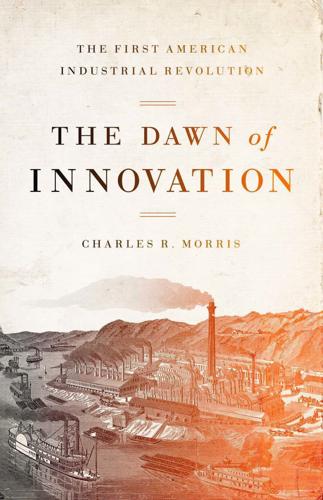
The Dawn of Innovation: The First American Industrial Revolution
by
Charles R. Morris
Published 1 Jan 2012
It was then roasted and thoroughly dried (steam could explode a blast furnace) and pulverized in a stamping mill to reduce the impurities before smelting. Most ancient iron was from bog iron, but it is no longer used for industrial purposes. New Jersey’s iron bogs now produce cranberries. t John Harrison used wooden gears in the first longitude chronometers because the oils in the wood made them self-lubricating. Brass was harder and more durable but needed external lubrication, which trapped dust and other contaminants. Harrison feared that their accuracy would degrade on an extended voyage. As he shrank his chronometers, small-dimension machining mandated the switch to brass components.
…
A century later, that bias, perhaps interacting with a certain upper-class intellectual style, may have disadvantaged Great Britain in its inevitable industrial confrontation with the United States. The Longitude Problem Eighteenth-century British admirals grumbled about keeping their ships out past August. The navigational apparatus for taking latitude readings—the north/south position—was quite accurate. The noon sighting—to fix the latitude, recalibrate the ship’s clock, and turn the calendar—was inviolable ritual on British warships. A captain could readily find a line on the same latitude as the mouth of the English Channel and ride it home. Without obvious landmarks, however, it was much harder to divine how far east or west you were. That was the longitude problem, and to a seafaring nation it was of first importance.
…
More tragically, in 1707, a returning war fleet, under the impression they were well into the channel mouth, made the turn north and ran directly on the rocks of the Scillies, losing four warships, a popular admiral, and 2,000 crewmen. The shock led to the passage of the Longitude Act, which offered a series of prizes for full or partial solutions to the challenge of accurately positioning a ship at sea on the east-west axis.12 There were two potential solutions. One involved time. If you set a clock at Greenwich time before leaving England, you could accurately calculate longitude simply by taking the difference between Greenwich time and sun time at your location. But the clock had to be extremely accurate, off by less than three seconds a day.

Bold: How to Go Big, Create Wealth and Impact the World
by
Peter H. Diamandis
and
Steven Kotler
Published 3 Feb 2015
My first step, after realizing that an incentive prize might help me fulfill my personal moonshot, was to learn everything I could about prizes, their history, and how and why they worked. The Power of Incentive Competitions Orteig didn’t invent incentive prizes. Three centuries before Lindbergh crossed the Atlantic by plane, the British Parliament wanted some help crossing the Atlantic by ship. In 1714, the £20,000 Longitude Prize was offered to the first person to accurately measure longitude at sea. It worked. In 1765, horologist John Harrison pulled it off, but beyond opening the oceans to navigation, this competition brought incentive prizes—as a method for driving innovation—into the public eye. The idea spread quickly. In 1795, for example, Napoléon I offered a 12,000-franc prize for a method of food preservation to help feed his army on its long march into Russia.
…
In seeking the broadest range of qualified teams—independent of age, education, and experience—you maximize the opportunity for breakthrough results. In other words, don’t try to anticipate where solutions will come from. In the case of the Longitude Prize, the British Admiralty was so certain that determining longitude would come from looking at the stars, they filled the committee charged with picking the winner with astronomers. As a result, John Harrison, a watchmaker, was denied the purse for nearly a decade. 12. Prize timelines and deadlines. The prize timeline is a function of the competition’s degree of difficulty. Smaller HeroX challenges might be awarded in six months to a year, while larger-end $10 million XPRIZEs are designed to be won in a three- to eight-year time frame.
…
Louis (New York: Scribner, 1953). 2 Stephen Schaber, “Why Napoleon Offered a Prize for Inventing Canned Food,” NPR, March 5, 2012, http://www.npr.org/blogs/money/2012/03/01/147751097/why-napoleon-offered-a-prize-for-inventing-canned-food. 3 Knowledge Ecology International, “Selected Innovation Prizes and Reward Programs,” KEI Research Note 2008:1, http://keionline.org/misc-docs/research_notes/kei_rn_2008_1.pdf. 4 All Marcus Shingles quotes come from an AI conducted 2014. 5 Burt Rutan, “The real future of space exploration,” TED, February 2006, https://www.ted.com/talks/burt_rutan_sees_the_future_of_space. 6 Statista, “Statistics and facts on Sports Sponsorship,” Sports sponsorship Statista Dossier 2013, March 2013. 7 Alice Roberts, “A true sea shanty: the story behind the Longitude prize,” The Observer, May 17, 2014, http://www.theguardian.com/science/2014/may/18/true-sea-shanty-story-behind-longitude-prize-john-harrison. 8 See http://www.interculturalstudies.org/faq.html#quote. 9 Dan Heath and Chip Heath, “Get Back in the Box: How Constraints Can Free Your Team’s Thinking,” Fast Company, December 1, 2007, http://www.fastcompany.com/61175/get-back-box. 10 For all things LunarX, see http://www.googlelunarxprize.org. 11 Campbell Robertson and Clifford Krauss, “Gulf Spill Is the Largest of Its Kind, Scientists Say,” New York Times, August 2, 2010, http://www.nytimes.com/2010/08/03/us/03spill.html?
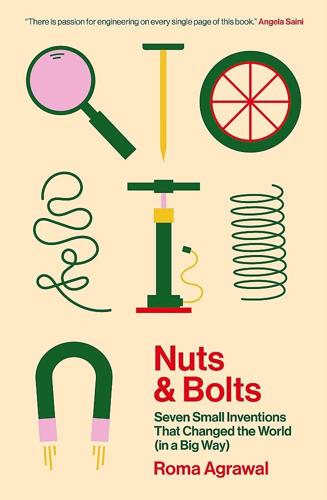
Nuts and Bolts: Seven Small Inventions That Changed the World (In a Big Way)
by
Roma Agrawal
Published 2 Mar 2023
https://ramboll.com/projects/rdk/musikkens hus. Roberts, Alice. ‘A True Sea Shanty: The Story behind the Longitude Prize’. Observer, 17 May 2014. https://www.theguardian.com/science/2014/may/18/true-sea-shanty-story-behind-longitude-prize-john-harrison. Royal Museums Greenwich. ‘Time to Solve Longitude: The Timekeeper Method’. 29 September 2014. https://www.rmg.co.uk/stories/blog/time-solve-longitude-timekeeper-method. Royal Museums Greenwich. ‘Longitude Found – the Story of Harrison’s Clocks’. https://www.rmg.co.uk/stories/topics/harrisons-clocks-longitude-problem. Ruderman, James. ‘High-Rise Steel Office Buildings in the United States’ The Structural Engineer vol. 43, no. 1, 1965.
…
After the Scilly naval disaster in 1707, in which around 1,400 people lost their lives, in large part due to the inability of the navigators to accurately calculate their position, the British Parliament offered a significant award to anyone who could improve the safety of long-distance sea travel. The problem lay in plotting the Earth’s longitudes, a vital means of orientation when approaching land. (Polynesian navigators had been calculating longitude for years through natural observation and knew their patch of ocean well, but these techniques weren’t used in the West.) The solution, at least in theory, was simple. If a clock was synchronised with the exact time at the zero-degree longitude at Greenwich, and then taken on a long-haul voyage, navigators could then calculate the time of their local position using the Sun and stars, and compare this to Greenwich Mean Time.
…
‘Friction and Dynamics of Verge and Foliot: How the Invention of the Pendulum Made Clocks Much More Accurate’. Applied Mechanics, vol. 1, no. 2, 29 April 2020. https://doi.org/10.3390/applmech1020008. Britannica. ‘Bow and Arrow’. https://www.britannica.com/technology/bow-and-arrow. Brown, Emily Lindsay. ‘The Longitude Problem: How We Figured out Where We Are’. The Conversation, 18 July 2013. http://theconversation.com/the-longitude-problem-how-we-figured-out-where-we-are-16151. Brown, Erik. ‘How The Ancients Improved Their Lives With Archery’. Medium, 15 October 2020. https://medium.com/mind-cafe/how-the-ancients-improved-their-lives-with-archery-1704318a1e60. Brownstein, Eric X.

Accessory to War: The Unspoken Alliance Between Astrophysics and the Military
by
Neil Degrasse Tyson
and
Avis Lang
Published 10 Sep 2018
But that didn’t faze Regnier Gemma Frisius, a Dutch mathematician who proposed that a good clock, set to the exact moment a ship left the dock, could serve as a stable point of comparison for the local time as ascertained at sea by Sun, star, or other means—assuming that the clock’s exactness could be preserved despite the moisture, cold, heat, salt, gravity, and tumult.68 Quite a task. Not until 1759, after thirty years of effort, did a provincial English craftsman named John Harrison manage to implement Gemma’s proposal. Harrison undertook the project not out of enthusiasm for a challenge or concern for his shipwrecked countrymen but because in the summer of 1714 the British parliament had, in desperation, put up a series of substantial cash prizes for a solution to the longitude problem. Spain had been the first to offer a prize, in 1598; Portugal, Venice, and Holland had followed suit—but to no avail, which is why France and Britain soon turned to the founding of scientific academies, the building of observatories, and the luring of Europe’s name-brand astronomers, still to no avail.
…
Since such a voyage would take six weeks, any mechanism that lost or gained more than two minutes—the time equivalent of half a degree—over the course of the journey could not fetch the top prize.69 Sounds strict, until you consider that being off by half a degree is like heading for Times Square in the heart of Manhattan but ending up across the Hudson River in Plainfield, New Jersey, or telling your navigator you want to go to Fort Worth, Texas, but getting dropped in Dallas. John Harrison fashioned not just one but several chronometers, whose accuracy exceeded the most stringent demand of the Longitude Act. The first, completed in 1735 and known as H-1, was an intricate brass tabletop contrivance that ran on springs, wheels, rods, and balances; the fourth, H-4, completed in 1759, was an exquisite outsize watch that lay supine in a cushioned box and ran on diamonds and rubies.
…
He referred to it as “our trusty friend the Watch,” “our never failing guide, the Watch,” and asserted that “indeed our error (in Longitude) can never be great, so long as we have so good a guide as [the] Watch.”72 With its help, he crossed the Antarctic Circle, conclusively disproved the existence of a massive southern continent extending well north of Antarctica, claimed some chilly islands for Britain, and charted regions of the South Pacific so accurately that twentieth-century mariners continued to depend on his findings. John Harrison died in 1776, but even before he was laid to rest, a skilled assistant had begun to make knock-offs of H-4: the cheaper and less functional K-2 and K-3.
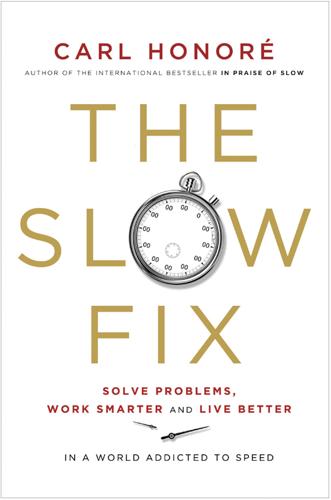
The Slow Fix: Solve Problems, Work Smarter, and Live Better in a World Addicted to Speed
by
Carl Honore
Published 29 Jan 2013
Five decades later someone finally won the competition by inventing a highly accurate clock that could take precise readings even in the choppiest waters. The most striking thing about the winner was his biography. John Harrison was not a sailor or a shipbuilder. Nor was he a professor at Oxford or Cambridge or a member of the Royal Society. Indeed, he had very little formal education. The son of a carpenter from Yorkshire, he had taught himself how to make clocks. In other words, he was the ultimate diamond in the rough. As the discovery of longitude shows, tapping the crowd is not new. What has changed in recent years is that technology makes it possible to marshal and manage larger groups than ever before and unearth ideas in the most obscure corners of the globe.
…
Chapter 9 – Crowdsource: The Wisdom of the Masses Wutbürger as German word of the year: Full list available from German Language Society at http://www.gfds.de/aktionen/wort-des-jahres/ Guessing the weight of an ox: James Surowiecki, The Wisdom of Crowds (New York: Random, 2005), pp. xii-xiii. Pinpointing vessel lost at sea: Surowiecki, The Wisdom of Crowds, pp. xx-xxi. Public identifies Mars craters: Surowiecki, The Wisdom of Crowds, p. 276. Diversity Trumps Ability Theorem: Based on my interview with Scott Page. John Harrison: For the whole story check out Dava Sobel, Longitude: The True Story of a Lone Genius Who Solved the Greatest Scientific Problem of His Time (London: Fourth Estate, 1998). Teenager invents method for detecting pancreatic cancer: Jake Andraka won first place at the 2012 Intel International Science and Engineering Fair (Intel ISEF), a program of the Society for Science and the Public.
…
In the early 18th century Britain’s Royal Navy lost many ships at sea because crews had no way to measure longitude while sailing. Some of the finest scientific minds of the day, including Sir Isaac Newton, had tried in vain to solve this problem. Desperate for a solution, Britain set aside its cosy assumptions about social class and turned to the crowd. In 1714 an Act of Parliament offered £20,000, a vast sum at the time, to anyone who invented a “Practicable and Useful” way of calculating longitude at sea. Five decades later someone finally won the competition by inventing a highly accurate clock that could take precise readings even in the choppiest waters.
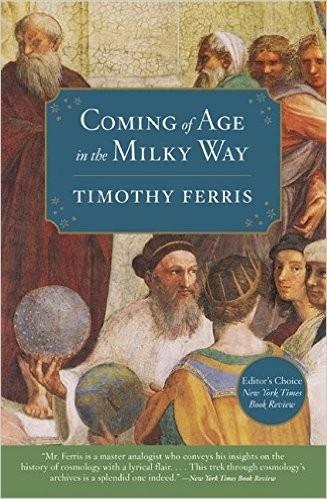
Coming of Age in the Milky Way
by
Timothy Ferris
Published 30 Jun 1988
The same thing happens with squaring the circle.”3 Sebastian Cabot on his deathbed claimed that God had revealed the answer to him, but added, alas, that He had also sworn him to secrecy. Still, the longitude problem was obviously imperative, and more than a few inventors took it on, encouraged by the large cash prizes proffered by the governments of seafaring states like Spain, Portugal, Venice, Holland, and England. The richest of these was a prize of twenty thousand pounds, offered by the British Board of Longitude to anyone who could devise a practicable method of determining longitude on a transatlantic crossing to within one-half a degree, which equals sixty-three nautical miles at the latitude of London. John Harrison, an uneducated carpenter turned clock-maker, pursued the prize for much of his working life.
…
Time: 1761, 1769 Noteworthy Events: Transits of Venus observed by widely scattered scientific expeditions, permitting new determinations of the distance from the earth to the sun—the “astronomical unit.” Time: 1765 Noteworthy Events: John Harrison is acknowledged by the English Board of Longitude to have developed the marine chronometer, making possible accurate timekeeping and the determination of longitude at sea. Time: 1766 Noteworthy Events: Henry Cavendish identifies hydrogen, the most abundant element in the universe. Time: 1781 Noteworthy Events: William Herschel discovers the planet Uranus. Time: 1783 Noteworthy Events: Herschel derives the general direction of the solar system’s motion through space, by studying the proper motion of thirteen bright stars.
…
A typical ship’s clock in the early eighteenth century was accurate to no better than five or ten minutes per day, which translated into a miscalculation of fully five hundred miles in longitude after only ten days at sea. It was just such an error that had dashed Cloudesley Shovell’s fleet on the rocks of the Scilly Islands. The problem of determining longitude at sea had defied resolution for so long that many regarded it as unsolvable. The mathematician in Cervantes’s The Dog’s Dialog muses crazily that he has “spent twenty-two years searching for the fixed point”— el punto fijo, the correct longitude—“and here it leaves me, and there I have it, and when it seems I really have it and it cannot possibly escape me, then, when I am not looking, I find myself so far away again that I am astonished.
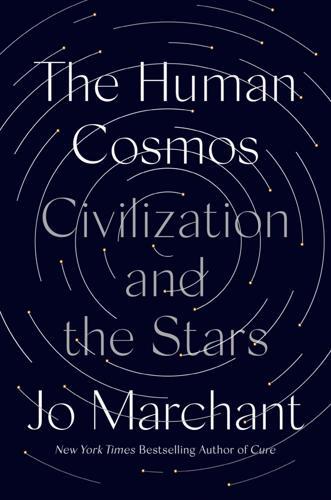
The Human Cosmos: A Secret History of the Stars
by
Jo Marchant
Published 15 Jan 2020
As the start of Cook’s first Pacific voyage neared, however, both approaches—clocks and astronomy—were finally on the verge of becoming practical. In 1759, after more than thirty years’ experimentation, the Yorkshire carpenter John Harrison came up with a device he called H4: a small clock, or chronometer, that could keep time on a ship (a story popularized in Dava Sobel’s 1995 best-seller Longitude). With the newly invented sextant, which allowed more accurate measurements of altitude at sea than ever before, navigators could compare local time at noon with the time back home. But the H4 was still being tested and argued over when Cook set sail in 1768.
…
Despite being in a sealed darkroom, they had adjusted their activity according to the local movements of the Moon. Instead of relying on inner timers, he was convinced they were sensing signals from the sky. These two approaches essentially paralleled the rival timekeeping methods used by navigators in the eighteenth century to calculate longitude. You can build a machine that keeps its own time, as clockmaker John Harrison did with his chronometer. Or you can take time references directly from the sky, as with the astronomer Nevil Maskelyne’s method of lunar distances. Which solution did life choose? Brown decided to investigate the most fundamental biological process he could think of: metabolism.
…
The sixteenth-century Dutch astronomer Gemma Frisius was first to realize that although we think of longitude in geographical terms, as a position in space, with respect to the sky it’s actually a function of time. Observers at differing longitudes are at different points in the Earth’s daily rotation, so at any set moment, they will each see the Sun or stars at a different point in the sky; the greater the difference in longitude, the greater the difference in the time of day. Frisius suggested that as long as a traveler knows the time at his starting point and at his current location, he can find his change in longitude by calculating the difference between the two.* This was easier said than done, however.
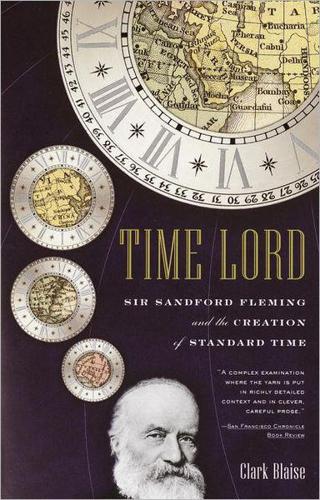
Time Lord: Sir Sandford Fleming and the Creation of Standard Time
by
Clark Blaise
Published 27 Oct 2000
Let Greenwich do her best to maintain her high position in administering to the longitude of the world, and Nautical Almanacs do their best, and we will unite our effort without special acclaim to the fictitious honour of a Prime Meridian. Airy’s conclusion strikes the scornful, above-the-battle stance to which astronomy often aspires. (One need only recall the arguments recorded in Dava Sobel’s Longitude, the contempt of an earlier astronomer-royal, Sir Nevil Meskalyne, for the provincial clock-maker John Harrison.) Airy’s recommendation to the Privy Council was to abstain from any “novelty” or “social usage,” on the principle that government intervention might prove more harmful than the recognized inconveniences enumerated in Fleming’s paper.
…
It will be seen that we are about 40 degrees nearer Greenwich and therefore 40/360th or about 1/9th the circumference of the Globe (in this latitude) away from Toronto and therefore our time on board should be 1/9th of 24 hours faster than Toronto time, hence where it is noon by my watch it is 2:40 o’clock by ship’s time. Between noon yesterday and noon today we ran easterly about five and a half degrees longitude and as each degree of longitude is equal to 24 hours divided by 360, or four minutes of time, the ship clock has to be moved forward four minutes for each degree of longitude passed over and thus today five and a half times 4 equals 22 minutes. At this rate our lunch which is at noon will come about twenty minutes sooner every day. The distance between Quebec and Glasgow by the course of the ship is about 2900 miles and this afternoon we have passed over about half that distance.
…
The universal day should begin at the Greenwich midnight, not noon, for the avoidance of double-counting the dates in Europe and North America. The Russian deserves credit for the east-west division of longitudes, 180 degrees east and west from the zero meridian, also an overturning of a Fleming-supported Rome agreement. Otherwise, Greenwich would have been in the anomalous position of lying, simultaneously, on the zero and the 360th degree of longitude. Villages a few miles west of Greenwich would carry unwieldy coordinates like 359 degrees west longitude, while neighboring towns a few miles east might lie at two degrees. To de Struve also goes the credit for unifying the astronomer’s day with the civil day (“We think it easier for the astronomers to change the starting point, and to make allowance for the twelve hours of difference in their calculations, than it would be for the public and for the business men, if the date for the universal time began at noon, and not at midnight”) and, perhaps most significantly, for the creation of the all-important international date line (“the change of the day of the week, historically established on or about the anti-meridian of Greenwich, should henceforth take place exactly on that meridian”).

Whiplash: How to Survive Our Faster Future
by
Joi Ito
and
Jeff Howe
Published 6 Dec 2016
Jeff Howe, “The Crowdsourcing of Talent,” Slate, February 27, 2012, http://www.slate.com/articles/technology/future_tense/2012/02/foldit_crowdsourcing_and_labor_.html. 6 Jeff Howe, “The Rise of Crowdsourcing,” WIRED, June 1, 2006, http://www.wired.com/2006/06/crowds/. 7 Todd Wasserman, “Oxford English Dictionary Adds ‘Crowdsourcing,’ ‘Big Data,’” Mashable, June 13, 2013, http://mashable.com/2013/06/13/dictionary-new-words-2013/. 8 “Longitude Found: John Harrison,” Royal Museums Greenwich, October 7, 2015, http://www.rmg.co.uk/discover/explore/longitude-found-john-harrison. 9 Michael Franklin, “A Globalised Solver Network to Meet the Challenges of the 21st Century,” InnoCentive Blog, April 15, 2016, http://blog.innocentive.com/2016/04/15/globalised-solver-network-meet-challenges-21st-century/. 10 Karim R.
…
The sciences have long utilized various distributed knowledge networks that were able to effectively marshal the diversity that exists across a wide range of disciplines. One of the best-known examples is the Longitude Prize. In 1714 the English Parliament offered a £10,000 prize to anyone who could figure out a method to determine longitude. Some of the leading scientific minds focused their considerable talents on this problem, but the purse was eventually claimed by the self-taught clockmaker John Harrison. 8 Of course, amateurs have always made contributions to disciplines like astronomy and meteorology that thrive on large numbers of observations. But before the Internet, the public had little opportunity to contribute to the creation of other types of scientific knowledge.
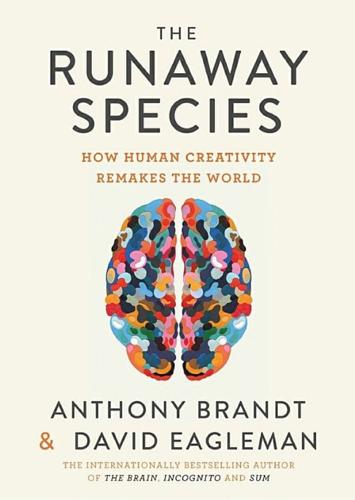
The Runaway Species: How Human Creativity Remakes the World
by
David Eagleman
and
Anthony Brandt
Published 30 Sep 2017
Edison, “The Phonograph and Its Future,” Scientific American 5, no. 124 (1878): 1973-4, <http://dx.doi.org/10.1038/scientificamerican05181878-1973supp> 7 Dava Sobel, Longitude: The True Story of a Lone Genius Who Solved the Greatest Scientific Problem of His Time (New York: Walker, 1995). 8 Dava Sobel, Longitude. 9 Unfortunately, Harrison never received his due. To test whether Harrison’s elaborate design could be manufactured by others, the Board of Longitude commissioned another watchmaker named Larcum Kendall to make a copy. It took Kendall two and half years to complete it. Kendall’s knock-off, called the K-1, was indistinguishable from Harrison’s except for a more ornate backplate. The Board of Longitude chose the K-1 over the H-4 to accompany Captain Cook on his voyage to the Pacific; in their minds, that disqualified Harrison for the Longitude Prize.
…
Edison, “The Phonograph and Its Future,” Scientific American 5, no. 124 (1878): 1973-4, <http://dx.doi.org/10.1038/scientificamerican05181878-1973supp> 7 Dava Sobel, Longitude: The True Story of a Lone Genius Who Solved the Greatest Scientific Problem of His Time (New York: Walker, 1995). 8 Dava Sobel, Longitude. 9 Unfortunately, Harrison never received his due. To test whether Harrison’s elaborate design could be manufactured by others, the Board of Longitude commissioned another watchmaker named Larcum Kendall to make a copy. It took Kendall two and half years to complete it. Kendall’s knock-off, called the K-1, was indistinguishable from Harrison’s except for a more ornate backplate. The Board of Longitude chose the K-1 over the H-4 to accompany Captain Cook on his voyage to the Pacific; in their minds, that disqualified Harrison for the Longitude Prize.
…
Faced with continued losses in their fleet, Parliament made a bold decision to inspire people to look beyond the usual solutions: it announced a prize of £20,000 (the equivalent of $1 million in today’s money) for anyone who devised a way to accurately measure longitude. As science historian Dava Sobel writes, “This power over purse strings made the Board of Longitude perhaps the world’s first official research-and-development agency.”8 The early results were not promising. The Board of Longitude evaluated proposals for a diverse array of devices with fanciful names like phonometers, pyrometers, selenometers and heliometers. None worked. Fifteen years after the prize was announced, the Board had still not found a single effort worthy of support.
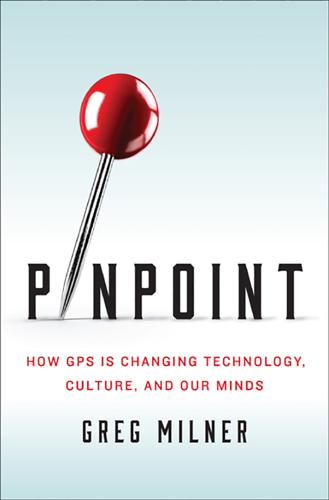
Pinpoint: How GPS Is Changing Our World
by
Greg Milner
Published 4 May 2016
But it was ultimately the horological solution that prevailed. John Harrison, a self-taught clockmaker, developed an ocean-hardened chronometer he called H4. The first reproduction of H4 was carried on Cook’s second Pacific voyage, when his encounter with Tupaia was a distant memory. Having tested it against the lunar distance method for calculating longitude, Cook offered rave reviews of the chronometer when he returned to England in July 1775, calling it “our trusty friend” and “our never failing guide.” The chronometer soon became standard. The longitude problem was solved. The significance of the chronometer cannot be overstated.
…
Captains might increase the certainty of their bearings by hewing close to latitudinal parallels, the method Columbus used during his voyage to North America. By the early eighteenth century, longitude miscalculations were responsible for several deadly shipwrecks. The problem was not merely safety, but also the perceived economic losses caused by the inability of ships to go anywhere and everywhere with confidence. The widespread skepticism that longitude was conquerable was reflected in the common colloquialism “discovering the longitude,” which meant attempting the impossible. The longitude problem presented itself as a classic Enlightenment conundrum. To search for “the longitude”—and discover it—was to pursue a kind of perfect knowledge.
…
David Lewis: “[N]o one seems to have asked [Tupaia] how he oriented himself, or what his actual concepts and methods were” (We, the Navigators, 9). Chapter 2: The When and the Where 24 the transit of Venus: Steven Cherry, Transit of Venus: The Other Half of the Longitude Story, Techwise Conversations, n.d., http://spectrum.ieee.org/podcast/geek-life/profiles/transit-of-venus-the-other-half-of-the-longitude-story. 26 “discovering the longitude”: Dava Sobel, Longitude: The True Story of a Lone Genius Who Solved the Greatest Scientific Problem of His Time (New York: Walker and Co., 1995), 56. 27 In 1800, Chevalier de Lamarck: Walter Sullivan, “The IGY—Scientific Alliance In a Divided World,” Bulletin of the Atomic Scientists 14, no. 2 (February 1958): 68–72. 28 first international organization: Ibid., 68. 28 “the largest organized intellectual enterprise”: John A.
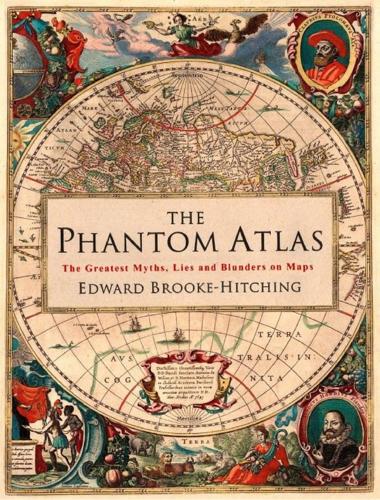
The Phantom Atlas: The Greatest Myths, Lies and Blunders on Maps
by
Edward Brooke-Hitching
Published 3 Nov 2016
Most often seen in polar regions, the optical illusion is a prolific culprit in the perpetration of false land sightings – it is accused, for example, of being the implement of disaster in Baron von Toll’s 1902 expedition to find Sannikov Land in the Arctic Ocean. And then, of course, there is the honest error, which is usually rooted in educated guesses of ‘wishful mapping’ or the limited ability of contemporary measurement systems. Coordinates were rough and imprecise, until John Harrison’s invention of an accurate marine chronometer in the eighteenth century provided a long-sought solution to the problem of measuring longitude. Errors were copied, and discoveries even frequently ‘remade’. Lieutenant Charles Wilkes, for example, during an 1838 survey of the Tuamotos, discovered an island at 15°44'S, 144°36'W. He named it King Island, in honour of the lookout who had spotted it.
…
.* Describing the Crocker Land question as ‘the world’s last geographical problem’, MacMillan announced the mission to the world at a press conference in 1913: Donald MacMillan, c.1910. In June 1906, Commander Peary, from the summit of Cape Thomas Hubbard, at about latitude 83 degrees N, longitude 100 degrees W, reported seeing land glimmering in the northwest, approximately 130 miles [210km] away across the Polar Sea. He did not go there, but he gave it a name in honor of the late George Crocker of the Peary Arctic Club. That is Crocker Land. Its boundaries and extent can only be guessed at, but I am certain that strange animals will be found there, and I hope to discover a new race of men.
…
In the eighteenth century, a sceptical Vitus Bering, a Danish explorer in Russian service, spent three days hunting for the islands, only to have his doubts confirmed. On 16 April 1779, Captain James Cook made a critical note of Gamaland in the third volume of his Voyage to the Pacific Ocean: At noon, on the 16th, our latitude was °42 12' [sic] and our longitude 160°5’; and, being near the situation where De Gama is said to have seen a great extent of land, we were glad of an opportunity of contributing to remove the doubts, if any yet remained, respecting this pretended discovery . . . Mr. Muller relates, that the first account of it was in a chart published by [Portuguese cartographer] Texeira, in 1649; who places it between the latitude of 44° and 45°, and calls it ‘land seen by John De Gama, in a voyage from China to New Spain.’
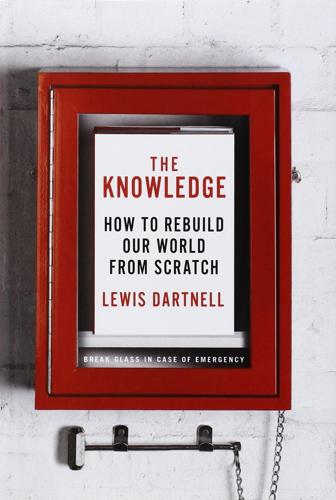
The Knowledge: How to Rebuild Our World From Scratch
by
Lewis Dartnell
Published 15 Apr 2014
The Sun’s position is how we define the time of day (right back to the fundamentals of sundials we saw earlier), and so the problem of finding your longitude—how far around the world you are from some chosen baseline—boils down to finding the difference in time of day at the same instant between the baseline and your current position. The Earth spins 360 degrees in 24 hours, so a difference in the timing of noon of one hour equates to 15 degrees of longitude. Determining your longitude is therefore a measure of time transposed back into space. In fact, you’ve almost certainly felt the solution to longitude acutely yourself: modern high-speed air transport teleports us between remote locations with very different local times before our bodies can adapt.
…
Similarly, you can start at the equator, already defined as the circle around the planet halfway between both poles, and imagine dropping shrinking rings every 10 degrees toward the north and south, with the poles therefore at 90 degrees. These traces running north-south between the poles are called lines of longitude, and the east-west rings encircling the planet on either side of the equator are lines of latitude. All the lines of latitude are parallel to one another, and the lines of longitude cut across them always at right angles. So, near the waistband of the world the latitude-longitude coordinates approximate the street-avenue system on the flat plane of Manhattan, with the square grid increasingly distorted toward the poles by the spherical geometry of the Earth.
…
As with the Manhattan streets, you need to set starting points so you can specify your numbered coordinates relative to them. The equator is the obvious 0° latitude line, but there is no corresponding natural zero mark for the longitude numbering: we happen to use Greenwich, London, as the “prime meridian” purely out of historical convention. To specify your location anywhere on the planet using this universal address system, all you need to do is state how many degrees north or south of the equator you are—your latitude—and how many degrees east or west of the prime meridian—your longitude. Right now, my smartphone says that I am at 51.56° N, 0.09° W (I’m in north London, not far from Greenwich). So, the original problem we set ourselves—how to navigate the world between known locations—splits neatly into two separate questions: How do I find my latitude, and how do I find my longitude?
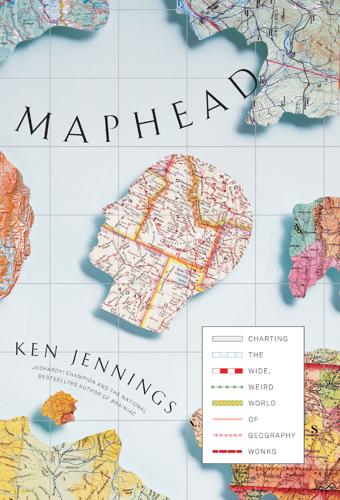
Maphead: Charting the Wide, Weird World of Geography Wonks
by
Ken Jennings
Published 19 Sep 2011
Today we’re so surrounded by high-quality maps that we have the tendency to take them for granted. Well, of course this is what my hometown looks like! See, here it is on Google Earth. Maybe we can remember or imagine a time when there was no aerial imagery or airborne radar or GPS, but 250 years ago, before John Harrison invented the marine chronometer, there wasn’t even a reliable way for sailors to measure their own longitude. Think about that for a moment: the best technology on Earth couldn’t tell you how far east or west you were at any given moment. That’s a wee bit of an obstacle when it comes to drawing reliable maps. When Ptolemy mapped the known world in the second century, he had to rely on oral histories and a series of rough mathematical guesses to gauge east-west distances.
…
At least members of the Highpointers Club are climbing to real geographical peaks, albeit minor ones in many cases. The earth’s grid of latitude and longitude, on the other hand, is entirely arbitrary. The fact that we divide the circle into 360 degrees is an ancient artifact based on the Babylonians’ (incorrect) estimate of the number of days in a year. Lines of longitude are even more arbitrary, since the Earth doesn’t have any West Pole or East Pole. Our current zero-degree line of longitude, the Prime Meridian through Greenwich, was a convention chosen only after much political wrangling at the 1884 International Meridian Conference, called by mutton-chopped U.S. president Chester A.
…
“So if I draw imaginary highways to spell dirty words in the middle of Siberia, you’ll catch me?” I asked Google’s Jessica Pfund. “Oh, we’ve seen that,” she said wearily. * If you do the math, there are actually 64,422 latitude and longitude confluences, but most of them are located on water or on the polar icecaps. Jarrett and company have also disallowed many of the higher-latitude confluences because lines of longitude converge there. As you get further from the Equator, confluences crowd together until they’re less than two miles apart at the poles. * The singular form of “antipode” has three syllables, like “antipope,” but the plural has four: “an-tip-uh-deez.”
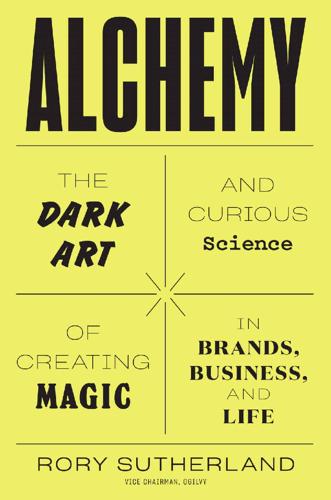
Alchemy: The Dark Art and Curious Science of Creating Magic in Brands, Business, and Life
by
Rory Sutherland
Published 6 May 2019
In the mid-eighteenth century, a largely self-taught clockmaker called John Harrison heard that the UK Government had pledged £20,000 – several million pounds in today’s currency – as a prize for anyone who could establish longitude to within half a degree* after a journey from England to the West Indies, and was determined to find a solution. This was a life and death matter – a navigational disaster by British naval ships off the Isles of Scilly in 1707 had left several thousand sailors dead. To judge proposed solutions, the crown established a Board of Longitude, consisting of the Astronomer Royal, admirals and mathematics professors, the Speaker of the House of Commons and ten Members of Parliament.
…
A 30-minute delay on a one-hour flight is a far greater annoyance than a one-hour delay on a nine-hour flight. *Or the ones who want an excuse to cancel their bloody meeting in Frankfurt. *I will explain how later in this book. *Thirty nautical miles at the equator. *We owe it to Dava Sobel and her bestselling book Longitude (1995) that the name of John Harrison is now widely known. *They had hence proved not only that a heavier-than-air machine could fly, but also that snobbery is not an exclusively British vice. *Semmelweis was even more cruelly treated than Harrison: he died in a lunatic asylum, perhaps having been beaten by the guards, insisting to his last breath that his theory was right.
…
Contents Cover Title Page Rory’s Rules of Alchemy Prologue: Challenging Coca-Cola The Case for Magic Introduction: Cracking the (Human) Code Introducing Psycho-Logic Some Things Are Dishwasher-Proof, Others Are Reason-Proof Crime, Fiction and Post-Rationalism: Or Why Reality Isn’t Nearly as Logical as We Think The Danger of Technocratic Elites On Nonsense and Non-Sense The Opposite of a Good Idea Can Be a Good Idea Context Is Everything The Four S-es Why We Should Ignore Our GPS 1: On the Uses and Abuses of Reason 1.1: The Broken Binoculars 1.2: I Know It Works in Practice, but Does It Work in Theory? On John Harrison, Semmelweis and the Electronic Cigarette 1.3: Psychological Moonshots 1.4: In Search of the ‘Real Why?’ Uncovering Our Unconscious Motivations 1.5: The Real Reason We Clean Our Teeth 1.6: The Right Thing for the Wrong Reason 1.7: How You Ask the Question Affects the Answer 1.8: ‘A Change in Perspective Is Worth 80 IQ Points’ 1.9: Be Careful with Maths: Or Why the Need to Look Rational Can Make You Act Dumb 1.10: Recruitment and Bad Maths 1.11: Beware of Averages 1.12: What Gets Mismeasured Gets Mismanaged 1.13: Biased about Bias 1.14: We Don’t Make Choices as Rationally as We Think 1.15: Same Facts, Different Context 1.16: Success Is Rarely Scientific – Even in Science 1.17: The View Back Down the Mountain: The Reasons We Supply for Our Experimental Successes 1.18: The Overuse of Reason 1.19: An Automatic Door Does Not Replace a Doorman: Why Efficiency Doesn’t Always Pay 2: An Alchemist’s Tale (Or Why Magic Really Still Exists) 2.1: The Great Upside of Abandoning Logic – You Get Magic 2.2: Turning Lead into Gold: Value Is in the Mind and Heart of the Valuer 2.3: Turning Iron and Potatoes into Gold: Lessons from Prussia 2.4: The Modern-Day Alchemy of Semantics 2.5: Benign Bullshit – and Hacking the Unconscious 2.6: How Colombians Re-Imagined Lionfish (With a Little Help from Ogilvy and the Church) 2.7: The Alchemy of Design 2.8: Psycho-Logical Design: Why Less Is Sometimes More 3: Signalling 3.1: Prince Albert and Black Cabs 3.2: A Few Notes on Game Theory 3.3: Continuity Probability Signalling: Another Name for Trust 3.4: Why Signalling Has to Be Costly 3.5: Efficiency, Logic and Meaning: Pick Any Two 3.6: Creativity as Costly Signalling 3.7: Advertising Does Not Always Look Like Advertising: The Chairs on the Pavement 3.8: Bees Do It 3.9: Costly Signalling and Sexual Selection 3.10: Necessary Waste 3.11: On the Importance of Identity 3.12: Hoverboards and Chocolate: Why Distinctiveness Matters 4: Subconscious Hacking: Signalling to Ourselves 4.1: The Placebo Effect 4.2: Why Aspirin Should Be Reassuringly Expensive 4.3: How We Can ‘Hack’ What We Can’t Control 4.4: ‘The Conscious Mind Thinks It’s the Oval Office, When in Reality It’s the Press Office’ 4.5: How Placebos Help Us Recalibrate for More Benign Conditions 4.6: The Hidden Purposes Behind Our Behaviour: Why We Buy Clothes, Flowers or Yachts 4.7: On Self-Placebbing 4.8: What Makes an Effective Placebo?
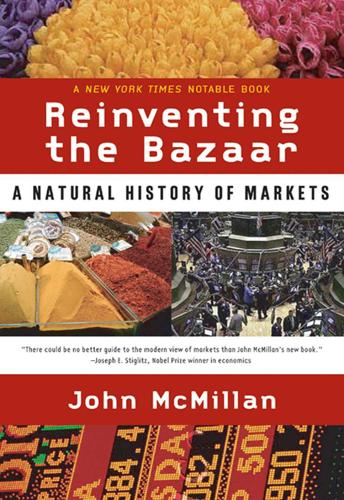
Reinventing the Bazaar: A Natural History of Markets
by
John McMillan
Published 1 Jan 2002
An early precedent for a buyout is the prize the British Parliament offered in the eighteenth century for a method of determining longitude, as chronicled by Dava Sobel in her absorbing book Longitude. Untold lives had been lost in shipwrecks caused by navigation errors, so the prize offered was a rich £20,000. A host of inventors submitted ideas, most of them hare-brained. The problem of measuring longitude accurately was solved by a humble clockmaker, John Harrison, with his invention of the chronometer. Its design was made available “for the use of the public” and it came to be mass-produced and universally used aboard ships, making sea journeys far less hazardous.
…
Governments—and everyone else—lack the knowledge to set the buyout price optimally. If it is set too low, it will not succeed in generating any new drugs. If it is set too high, on the other hand, the taxpayers’ money will be misspent. In the case of the prize for the measurement of longitude, for instance, the flurry of activity set off by the announcement of the prize and John Harrison’s own actions suggest, with the benefit of hindsight, that a more modest prize might have worked as well.12 A research tournament is an alternative way of generating innovation. This offers a cash prize, as with the buyout mechanism, but is awarded differently.
…
An Inquiry into the Nature and Causes of the Wealth of Nations. Chicago, University of Chicago Press. First published in 1776. Smith, Eugene. 1975. Minamata, New York, Holt, Rinehart, Winston. Smith, Vernon L. 1982. “Microeconomic Systems as an Experimental Science.” American Economic Review 72, 923–955. Sobel, Dava. 1996. Longitude. New York, Penguin. Sobel, Joel, and Takahashi, Ichiro. 1983. “A Multistage Model of Bargaining.” Review of Economic Studies 50, 411–426. Sobel, Robert. 1970. The Curbstone Brokers: The Origins of the American Stock Exchange. New York, Macmillan. Spence, A Michael. 1973. “Job Market Signaling.”
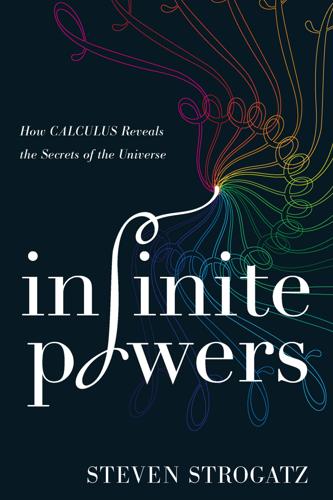
Infinite Powers: How Calculus Reveals the Secrets of the Universe
by
Steven Strogatz
Published 31 Mar 2019
Galileo died before he could build his clock and use it to tackle the longitude problem. Christiaan Huygens presented his pendulum clocks to the Royal Society of London as a possible solution, but they were judged unsatisfactory because they were too sensitive to disturbances in their environment. Huygens later invented a marine chronometer whose ticktock oscillations were regulated by a balance wheel and a spiral spring instead of a pendulum, an innovative design that paved the way for pocket watches and modern wristwatches. In the end, however, the longitude problem was solved by a new kind of clock, developed in the mid-1700s by John Harrison, an Englishman with no formal education.
…
When Galileo was trying to devise a pendulum clock in his last year of life, he had the longitude problem firmly in mind. He knew, as scientists had known since the 1500s, that the longitude problem could be solved if one had a very accurate clock. A navigator could set the clock at his port of departure and carry his home time out to sea. To determine the ship’s longitude as it traveled east or west, the navigator could consult the clock at the exact moment of local noon, when the sun was highest in the sky. Since the Earth spins through 360 degrees of longitude in a twenty-four-hour day, each hour of discrepancy between local time and home time corresponds to 15 degrees of longitude.
…
They offered the first real hope of solving the greatest technological challenge of Galileo’s era: finding a way to determine longitude at sea. Unlike latitude, which can be ascertained by looking at the sun or the stars, longitude has no counterpart in the physical environment. It is an artificial, arbitrary construct. But the problem of measuring it was real. In the age of exploration, sailors took to the oceans to wage war or conduct trade, but they often lost their way or ran aground because of confusion about where they were. The governments of Portugal, Spain, England, and Holland offered vast rewards to anyone who could solve the longitude problem. It was a challenge of the gravest concern.
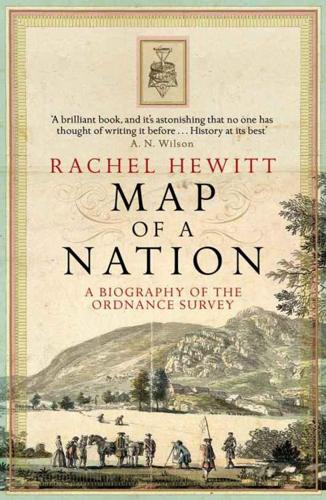
Map of a Nation: A Biography of the Ordnance Survey
by
Rachel Hewitt
Published 6 Jul 2011
There were neither lunar-distance tables nor chronometers accurate enough to cope with this task: the rolling of a ship, changes in temperature or variations in air pressure played havoc with the rate of timekeepers. So in 1714 the Board of Longitude set up a competition that offered a prize of £20,000 to anyone who could determine longitude on board ship to within thirty nautical miles of accuracy. Famously a man called John Harrison, who had built his first clock in 1713 at the age of twenty, dedicated himself to the chronometer method of overcoming the longitude problem for over forty years. Between 1730 and the 1770s, this talented craftsmen made five beautiful timekeepers for the competition, for which he eventually received a total of £23,065.
…
It was then that he approached the British with the idea of verifying the precise longitude and latitude of the two royal observatories at Paris and Greenwich. But whereas English astronomers typically preferred to discover these positions by treating the stars as celestial compasses, Cassini de Thury recommended eschewing such ‘positional astronomy’ in favour of using triangulation to discover longitude and latitude by ‘joining up’ the meridian arc that bisected Paris with the Greenwich Observatory. His motives for suggesting the project were manifold. The check on Paris’s longitude and latitude would confirm the accuracy of the Carte de Cassini.
…
In the last decades of the eighteenth century, Thomas threw himself into a dispute that split the scientific community in two. Back in 1714, a governmental body had been established ‘for the Discovery of Longitude at Sea’. Longitude and latitude, those conceptual lines that criss-cross the globe, were the primary means by which mariners oriented their vessels. Latitude was easy to discover according to the height of the sun or various stars above the horizon. But in the eighteenth century longitude was much trickier to establish on board ship. There were two principal ways: because the earth turns on its own axis every twenty-four hours, the sun’s light shifts longitudinally as time passes and therefore a calculation of the time difference between the boat and the home port allows the determination of the distance between them in longitude.

Rage Inside the Machine: The Prejudice of Algorithms, and How to Stop the Internet Making Bigots of Us All
by
Robert Elliott Smith
Published 26 Jun 2019
History Today, www.historytoday.com/duncan-bythell/cottage-industry-and-factory-system 4Maskelyne is most popularly remembered as the nemesis of John Harrison, inventor of the marine watch, who was denied a parliamentary award for this solution to ‘the longitude problem’ for many years, based on evaluations and decisions involving Maskelyne. While this was clearly unfair, as Harrison’s solution was ultimately more effective than the Nautical Almanac; the watches were the supercomputers of their day, and they remained too rare and expensive for use throughout maritime industry. The Nautical Almanac, including tables that implemented Maskelyne’s longitude technique, would continue to be widely used for navigation well into the nineteenth century. 5Mary Croarken, 2003, Mary Edwards: Computing for a Living in 18th-Century England.
…
So while we now view astronomy as a niche hobby, up until the nineteenth century it was one of the most important fields of human endeavour, business as serious as building B-52s during the Cold War, or big-data algorithms today. Finding a computational solution to the longitude problem was the most important challenge in that vital endeavour. English Astronomer Royal Nevil Maskelyne was charged with this challenge, which made him the most important technologist of his time. Maskelyne developed a system for determining one’s longitude, but unfortunately it required the computation of massive tables.4 The secret to Maskelyne’s longitude system is that it is relatively easy to know what time it is in a particular location on the spinning surface of the Earth, because no matter where you are on Earth, as long as weather allows you to see the sun, you can determine the local time (particularly at midday, when the sun is at its maximum height).
…
Finding one’s position on the Earth is hard, because the Earth is spinning. The stars in the sky can help you tell where you are from North to South (latitude), but not from East to West (longitude), because the Earth spins East to West under the canopy of stars. For centuries, this fundamental fact of life meant a substantial risk that merchant ships laden with valuable cargo might go astray, or warships might not arrive at the scene of battle on time, because they couldn’t accurately tell where they were East to West. Modern GPS fixes this longitude problem by placing satellites above the Earth that spin in geostationary orbit so that we can measure against their fixed position (relative to Earth) to determine our location and plot our routes.
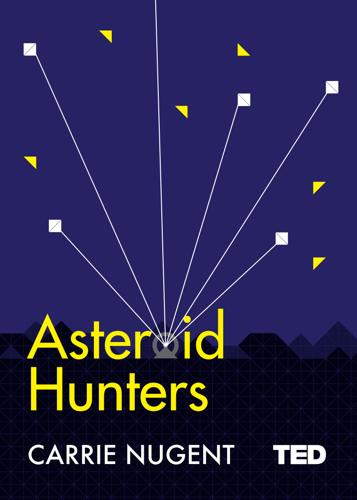
Asteroid Hunters (TED Books)
by
Carrie Nugent
Published 14 Mar 2017
But pressure from the other astronomers was mounting (Rule #2: “Share your observations”). Everyone was itching to see this new planet for themselves. Not everyone was being nice about it. Britain’s Astronomer Royal, Nevil Maskelyne, has been remembered by history as a bit of a jerk. (If you have read Dava Sobel’s Longitude, you may remember Maskelyne as John Harrison’s nemesis). At this time, he wrote a particularly nasty passage: “There is great astronomical news: Mr. Piazzi, Astronomer to the King of the two Sicilies, at Palermo, discovered a new planet the beginning of this year, and was so covetous as to keep this delicious morsel to himself for six weeks; when he was punished for his illiberality by a fit of sickness . . .”
…
To determine its orbit, astronomers would need as many observations of the asteroid’s position as possible. This would require international cooperation. Some asteroids are only visible from one hemisphere on Earth; it’s possible that tracking would need to be done by astronomers in countries below the equator. And since telescopes can’t look at the Sun, you’d want observatories at different longitudes, so the asteroid could be monitored constantly as night falls around the globe. But even after thousands of observations, there’s still going to be a small amount of uncertainty in where exactly the asteroid is going. Although the orbit might be predicted with extraordinary precision, the chance it has of hitting Earth is expressed as a probability.
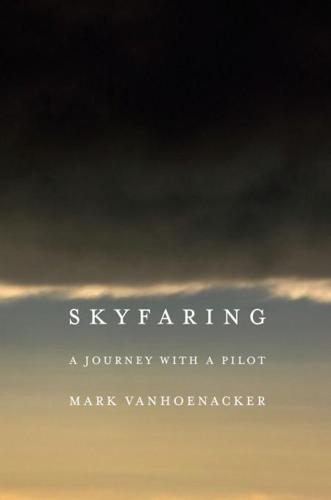
Skyfaring: A Journey With a Pilot
by
Mark Vanhoenacker
Published 1 Jun 2015
Flying over north London I can see a churchyard in which I sometimes sit with a coffee, where the tomb of John Harrison, “late of Red-Lion Square,” stands. Encouraged by the astronomer Edmund Halley, Harrison developed the “sea clocks” that helped solve the longitude problem, the difficulty with determining one’s east–west position at sea, an achievement so important that the officials who recognized it were known as Commissioners of Longitude. At such moments over London, as we come to the end of the planetwide countdown that every flight to this city effects, our longitude is nearly zero; it may ticktock from west and east and back to west as we cross the Greenwich Meridian in the next minutes of our approach pattern to Heathrow.
…
Transfixed by the ocean, he wrote to his brother that if he had had such an experience of the sea when he was younger, he might have devoted himself to nautical adventures rather than the “pursuits on land” that would bring him his fame and fortune. The captain on Hopkins’s ship, after determining the latitude and longitude, posted this information “where all may see and enter in their journal.” In the cockpit green digits show our longitude and latitude, much as the captain’s notice showed Hopkins the last-known position that he then copied onto his letters, an itinerant and star-sighted address as important a detail to him as the date. Hopkins also wrote about the stars at sea, which have “a serenity and bewitching loveliness in these latitudes such as I have never seen on land.”
…
Before I became a pilot I had the naive sense—a feeling, as opposed to what I’d been taught to the contrary—that most people lived in a world that looked something like where I grew up: small towns, forests, fields, four seasons, hills in some recurring, familiar pattern, the reference of a coastline a few hours away, and the vague gravity of a major metropolis at some similar distance. Today I understand in a direct and visual sense what I learned in school, that humanity is concentrated in a dense set of the lower latitudes of the northern hemisphere, and further in a dense set of longitudes in the eastern hemisphere; and what I have read since school, that ours is an age of cities—small ones as well as the conurbations like Mumbai, Beijing, and São Paulo that dominate the urban earth—in which for the first time a majority of humanity lives. A plane’s center of gravity is a critical piece of information that pilots receive before takeoff; it depends on the weight and location on the aircraft of the passengers, cargo, and fuel.
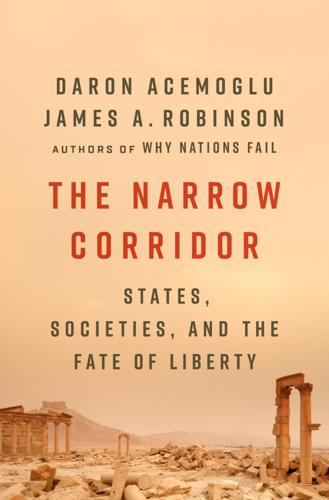
The Narrow Corridor: States, Societies, and the Fate of Liberty
by
Daron Acemoglu
and
James A. Robinson
Published 23 Sep 2019
Both the nature of experimentation, with plenty of false starts and a multitude of disparate approaches, and its critical role in innovative breakthroughs are perhaps best illustrated by the quest for a way for ships to tell their longitude at sea. Latitude could be calculated from the stars, but longitude was a bigger challenge. Ships frequently got lost at sea and the problems this caused became all too obvious in October 1707 when four out of a fleet of five British warships returning from Gibraltar miscalculated their longitude and sank on the rocks of the Isles of Scilly. Two thousand sailors drowned. The British government established the Board of Longitude and offered a series of prizes in 1714 to encourage a solution to this problem. It was known that one solution was to have two clocks on board a ship.
…
One set to, say, Greenwich mean time, and another that could be reset to noon each day by the sun at sea. Then one would know the time in Greenwich, and the time where you were. The difference between these times allowed you to calculate longitude. The trouble was that clocks were inaccurate, based on pendulums which got hopelessly out of whack at sea, or made of metals which expanded or contracted under different climatic conditions. The great physicist Isaac Newton, charged by the government to advise them on ways to calculate longitude, was deeply committed to the idea that this must come through astronomy and star positions. Though he agreed that in principle the clock solution worked, in practice it was dead in the water because by reason of the motion of the ship, the Variation of Heat and Cold, Wet and Dry, and the Difference of Gravity in different Latitudes, such a watch hath not yet been made.
…
Along the way he made many profound innovations, for example, using ball bearings for the first time, a technology still used for reducing rotational friction in most machines today. The obsessive search for a solution to longitude and all of the whacky ideas it engendered was was satirized by William Hogarth in a series of paintings called The Rake’s Progress. The last in the series depicts the infamous mental asylum in London, Bedlam, filled with those driven mad by the search for a way to calculate longitude. A consequence of all of this bustling experimentation was greater social mobility. As people from modest backgrounds succeeded in their efforts, they not only made money, but gained greater social recognition.
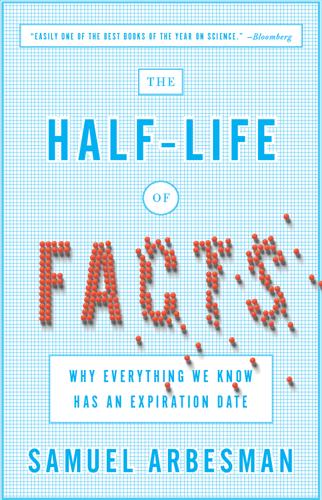
The Half-Life of Facts: Why Everything We Know Has an Expiration Date
by
Samuel Arbesman
Published 31 Aug 2012
Revealing hidden knowledge through the power of the crowd has been a great idea at almost any time in human history. This is behind the concept of the innovation prize. The British government once offered a prize for the first solution to accurately measure longitude at sea—created in 1714 and awarded to John Harrison in 1773—but this was by no means the first such prize. Other governments had previously offered other prizes for longitude: the Netherlands in 1627 and Spain as early as 1567. They hoped that by getting enough people to work on this problem, the solution—perhaps obtained by drawing on ideas from different fields—would emerge. In 1771, a French academy offered a prize for finding a vegetable that would provide adequate nutrition during a time of famine.
…
Robert Merton, a renowned sociologist of science, argued in “Science, Technology, and Society in Seventeenth-Century England” that the concerns of the English people during this time period affected where the scientists and engineers of that century focused their attentions. It is unsurprising that they were obsessed with the construction of precise timepieces—that is what was needed in order to carefully measure longitude on the high seas, something of an English preoccupation during this time. In addition, Merton argued that it wasn’t just the overall population size that caused innovation, but who these people were: It turns out that a greater percentage of eminent people of that time chose to become scientists rather than officers of the church or to go into the military.
…
J., 148–49, 155 deuterium, 151 Devezas, Tessaleno, 207–8 DEVONthink, 118–19 Diabetes Care, 67 dialect, situation-based, 190 Diamond, Arthur, 187 Dictionary of Theories (Bothamley, ed.), 85 dinosaurs, 3, 79–82, 168–69, 194 discovery: long tail of, 38 multiple independent, 104–5 pace of, 9–25 discriminating power, 159–60 diseases, 52, 176–77 categorization of, 205 spread of, 62, 64 Dittmar, Jeremiah, 71, 73 Dixon, William Macneile, 8 DNA, 88, 90, 122, 163 drugs, 24, 111–12 repurposing of, 112 streptokinase, 108–9 Dunbar, Robin, 205 Dunbar’s Number, 205–6 Earth, curvature of, 35–36 education, 182–83, 195 Einstein, Albert, 36, 106, 186 Electronics, 42 Ellsworth, Henry, 54 e-mail, 41 Empedocles, 201 Encyclopaedia of Scientific Units, Weights, and Measures: Their SI Equivalences and Origins (Cardarelli), 146 EndNote, 117–18 energy, 55, 204 Eos, 148 Erdo˝s, Paul, 104 errors, 78–95 contrary to popular belief phrase and, 84–85 Essay on the Application of Mathematical Analysis to the Theories of Electricity and Magnetism, An (Green), 106 eurekometrics, 21, 22 Eureqa, 113–14 Everest, George, 140 evolution, 79, 187 evolutionary programming, 113 evolutionary psychology, 175 expertise, long tail of, 96, 102 experts, 96–97 exponential growth, 10–14, 44–45, 46–47, 54–55, 57, 59, 130, 204 extinct species, 26, 27–28 facts, see knowledge and facts factual inertia, 175, 179–83, 188, 190, 199 Fallows, James, 86 Fermat, Pierre de, 132 Feynman, Richard, 104 fish, 201 fishing, 173 fish oil, 99, 110 Florey, Lord, 163 Flory, Paul, 104 Foldit, 20 Franzen, Jonathan, 208–9 French Canadians, 193–94 frogs: boiling of, 86, 171 vision of, 171 Galaxy Zoo, 20 Galileo, 21, 143–44 Galton, Francis, 165–68 games, 51 generational knowledge, 183–85, 199 genetics, 87–90 genome sequencing, 48, 51 Gibrat’s Law, 103 Goddard, Robert H., 174 Godwin’s law, 105 Goldbach’s Conjecture, 112–13 Goodman, Steven, 107–8 Gould, Stephen Jay, 82 grammar: descriptive, 188–89 prescriptive, 188–89, 194 Granovetter, Mark, 76–78 Graves’ disease, 111 Great Vowel Shift, 191–93 Green, George, 105–6 growth: exponential, 10–14, 44–45, 46–47, 54–55, 57, 59, 130, 204 hyperbolic, 59 linear, 10, 11 Gumbel, Bryant, 41 Gutenberg, Johannes, 71–73, 78, 95 Hamblin, Terry, 83 Harrison, John, 102 Hawthorne effect, 55–56 helium, 104 Helmann, John, 162 Henrich, Joseph, 58 hepatitis, 28–30 hidden knowledge, 96–120 h-index, 17 Hirsch, Jorge, 17 History of the Modern Fact, A (Poovey), 200 Holmes, Sherlock, 206 homeoteleuton, 89 Hooke, Robert, 21, 94 Hull, David, 187–88 human anatomy, 23 human computation, 20 hydrogen, 151 hyperbolic growth rate, 59 idiolect, 190 impact factors, 16–17 inattentional blindness (change blindness), 177–79 India, 140–41 informational index funds, 197 information transformation, 43–44, 46 InnoCentive, 96–98, 101, 102 innovation, 204 population size and, 135–37, 202 prizes for, 102–3 simultaneous, 104–5 integrated circuits, 42, 43, 55, 203 Intel Corporation, 42 interdisciplinary research, 68–69 International Bureau of Weights and Measures, 47 Internet, 2, 40–41, 53, 198, 208, 211 Ioannidis, John, 156–61, 162 iPhone, 123 iron: magnetic properties of, 49–50 in spinach, 83–84 Ising, Ernst, 124, 125–26, 138 isotopes, 151 Jackson, John Hughlings, 30 Johnson, Steven, 119 Journal of Physical and Chemical Reference Data, 33–35 journals, 9, 12, 16–17, 32 Kahneman, Daniel, 177 Kay, Alan, 173 Kelly, Kevin, 38, 46 Kelly, Stuart, 115 Kelvin, Lord, 142–43 Kennaway, Kristian, 86 Keynes, John Maynard, 172 kidney stones, 52 kilogram, 147–48 Kiribati, 203 Kissinger, Henry, 190 Kleinberg, Jon, 92–93 knowledge and facts, 5, 54 cumulative, 56–57 erroneous, 78–95, 211–14 half-lives of, 1–8, 202 hidden, 96–120 phase transitions in, 121–39, 185 spread of, 66–95 Koh, Heebyung, 43, 45–46, 56 Kremer, Michael, 58–61 Kuhn, Thomas, 163, 186 Lambton, William, 140 land bridges, 57, 59–60 language, 188–94 French Canadians and, 193–94 grammar and, 188–89, 194 Great Vowel Shift and, 191–93 idiolect and, 190 situation-based dialect and, 190 verbs in, 189 voice onset time and, 190 Large Hadron Collider, 159 Laughlin, Gregory, 129–31 “Laws Underlying the Physics of Everyday Life Really Are Completely Understood, The” (Carroll), 36–37 Lazarus taxa, 27–28 Le Fanu, James, 23 LEGO, 184–85, 194 Lehman, Harvey, 13–14, 15 Leibniz, Gottfried, 67 Lenat, Doug, 112 Levan, Albert, 1–2 Liben-Nowell, David, 92–93 libraries, 31–32 life span, 53–54 Lincoln, Abraham, 70 linear growth, 10, 11 Linnaeus, Carl, 22, 204 Lippincott, Sara, 86 Lipson, Hod, 113 Little Science, Big Science (Price), 13 logistic curves, 44–46, 50, 116, 130, 203–4 longitude, 102 Long Now Foundation, 195 long tails: of discovery, 38 of expertise, 96, 102 of life, 38 of popularity, 103 Lou Gehrig’s disease (ALS), 98, 100–101 machine intelligence, 207 Magee, Chris, 43, 45–46, 56, 207–8 magicians, 178–79 magnetic properties of iron, 49–50 Maldives, 203 Malthus, Thomas, 59 mammal species, 22, 23, 128 extinct, 28 manuscripts, 87–91, 114–16 Marchetti, Cesare, 64 Marsh, Othniel, 80–81, 169 mathematics, 19, 51, 112–14, 124–25, 132–35 Matthew effect, 103 Mauboussin, Michael, 84 Mayor, Michel, 122 McGovern, George, 66 McIntosh, J.
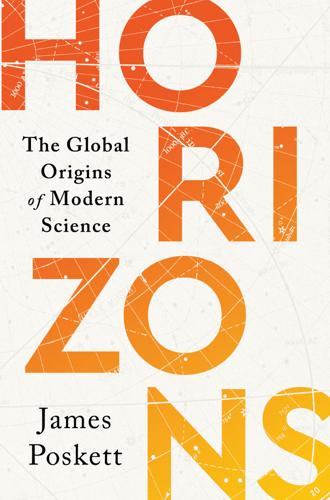
Horizons: The Global Origins of Modern Science
by
James Poskett
Published 22 Mar 2022
All in all, European scientific academies sent over 250 observers to locations right across the globe, from California in the west to Beijing in the east.35 Since the early eighteenth century, European navigators had increasingly been encouraged to use astronomical observations to calculate their position at sea. In 1714, the British Parliament established the Board of Longitude for exactly this purpose. The Board offered a reward of up to £20,000 for an accurate method to determine longitude at sea. Some of the proposed methods relied on keeping a precise measure of time over the course of a long voyage. The clockmaker John Harrison famously adopted this approach, developing a special marine timekeeper which was tested on a voyage to Jamaica in 1761. The hope was that Harrison’s timekeeper might aid in navigation between West Africa and the Caribbean, another reminder of the role of the transatlantic slave trade in shaping eighteenth-century science.
…
The hope was that Harrison’s timekeeper might aid in navigation between West Africa and the Caribbean, another reminder of the role of the transatlantic slave trade in shaping eighteenth-century science. However, the majority of methods favoured by the Board of Longitude were based on astronomical observations. These included measurements of the satellites of Jupiter as well as measurements of the angle between the Moon and particular stars. Longitude at sea could then be computed by comparing these results with tables produced back at the Royal Observatory in Greenwich. An accurate measure of the size of the solar system was therefore essential, not just for confirming Newton’s predictions, but also for the advancement of navigation.36 Captain James Cook treated the transit of Venus like a military operation.
…
In 1569, the Flemish cartographer Gerardus Mercator produced an influential map he titled ‘New and More Complete Representation of the Terrestrial Globe Properly Adapted for Use in Navigation’. Mercator effectively stretched the Earth at the poles, and shrunk it in the middle. This allowed him to produce a map of the world in which the lines of latitude and longitude are always at right angles to one another. This was particularly useful for sailors, as it allowed them to follow compass bearings on the map as straight lines. Today, Mercator’s projection, originally designed to aid navigation to the Americas, is used as the basis of all modern world maps.59 With so much at stake, the Spanish Crown soon realized it needed to adopt a more systematic approach to studying the Americas.
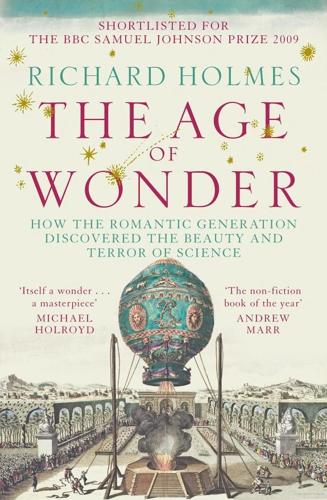
The Age of Wonder
by
Richard Holmes
Published 15 Jan 2008
Mathematician and Astronomer Royal, who produced a valuable Astronomical Almanac for mariners. He supported Herschel at the Royal Society, and later became a loyal and kindly friend of Caroline’s, having her stay on her own at the Royal Observatory, Greenwich. He sat on the Board of Longitude, and was subsequently vilified - perhaps unjustly - for his treatment of the chronometer-maker John Harrison. He had a complex relationship with Sir Joseph Banks, whom he did not think knew enough mathematics. WILLIAM NICHOLSON, 1753-1815. British chemist and early experimenter with electrolysis, who famously repeated Lavoisier’s experiment decomposing water into hydrogen and oxygen, thereby demonstrating that it was not a primary ‘element’.
…
But it may not be improper to set you right in one particular which you possibly may have misunderstood, and that is that you suppose the ships to have been fitted out for your use, which I own I by no means apprehend to be the case.’80 The Admiralty had, in effect, rejected the notion of underwriting another purely scientific voyage, for what Sandwich called ‘improvements in natural knowledge’. From now on Cook’s voyages were to take on more practical and empire-building objectives (though they would include testing the rival chronometers of John Harrison and John Arnold). Lord Sandwich made it clear that Banks would have to pursue his science on his own: ‘Upon the whole I hope that for the advantage of the curious part of Mankind, your zeal for distant voyages will not yet cease, I heartily wish you success in all your undertakings, but I would advise you in order to ensure success to fit out a ship yourself; that, and only that, can give you the absolute command of the whole Expedition.’81 So Banks commissioned his own brig, the Sir Lawrence, went to the Hebrides and inspected Fingal’s Cave, and then sailed on to Iceland, where he made many friends, admired the geysers and volcanoes, collected lava specimens, but made few original discoveries.
…
On 8 May Herschel left for London, his precious telescope and folding stand perilously packed into a mahogany travel-box (’to be screwed together on the spot where wanted’), accompanied by a hastily assembled trunk of equipment including his large Flamsteed atlas (marked up by Caroline), his new catalogue of double stars (similarly written up by Caroline), ‘micrometers, tables, etc’, and rather makeshift court dress.144 At Greenwich, Maskelyne was stunned by the superior quality and light-gathering power of Herschel’s ‘home made’ mirrors. He immediately recognised that they were far more powerful than any of the official observatory telescopes, and probably than any other telescope in Europe. Maskelyne, reputed to be a jealous and illiberal man because of his supposed ill-treatment of the watchmaker John Harrison, behaved with great forthrightness and generosity to Herschel. On 3 June 1782 Herschel wrote exuberantly to Caroline, casting aside his usual circumspect tone: ‘Dear Lina…The last two nights I have been star-gazing at Greenwich with Dr Maskelyne & Mr Aubert. We have compared our telescopes together and mine was found very superior to any at the Royal Observatory.
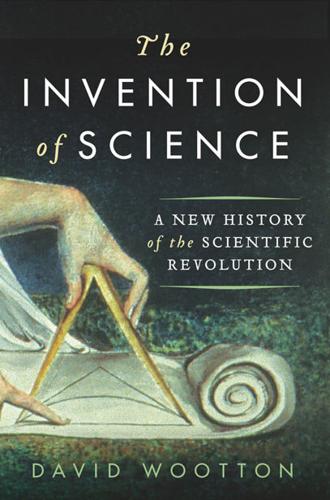
The Invention of Science: A New History of the Scientific Revolution
by
David Wootton
Published 7 Dec 2015
Kepler was convinced one had to think of forces flowing through space – his inspiration was provided by Gilbert’s recently published study of the magnet – and ask oneself how a celestial helmsman would take his bearings.21 Consequently, he insisted on using one single mathematical model to account for a planet’s movement across the heavens. When he tried to employ this method for Mars using Brahe’s combination of circles, he could get satisfactory results for the longitudes (2 minutes of error), but then the latitudes failed. When he readjusted the geometry to get the latitudes right, the error in the longitudes climbed to a value that would once have been dismissed as insignificant but which Kepler now thought intolerable: a full 8 minutes.22 The truth is that, if Kepler had been determined to find a system of circles that would fit, he could have done so, as he later recognized.
…
By 1522 Sebastian Cabot had discovered the variation of the compass: the needle does not point to true north but either somewhat to the east or to the west, and it varies in the extent to which it diverges from true north depending on where you are on the surface of the globe. This discovery presented fundamental difficulties for any account of how the compass worked, but it also raised the exciting possibility that variation might be sufficiently regular for it to be used to measure longitude. Since longitude was the missing piece of knowledge for oceanic navigators, all the early modern studies of the magnet were alert to the possibility that they might be able to fill this gap. Chronologically speaking, Leonardo Garzoni’s treatises (discussed in Chapter 7) are the first major work of modern experimental science, but here chronology is misleading, for in crucial respects they are simply a continuation of the erratic medieval tradition of experimentation.
…
For the young Napoleon, who was exceptionally good at mathematics, the problems which had defeated the great Torricelli were by the 1780s mere school exercises – the school, of course, being the École Militaire.14 Or take the challenge that preoccupied Galileo through a large part of his working life: that of establishing longitude at sea. Degrees north and south (latitude) are easy to calculate, providing one knows the date, from the height of the sun at midday; degrees east and west (longitude) are much harder to establish, since there is no obvious reference point that one can use. Galileo theorized that one could use eclipses of the moons of Jupiter (which he had discovered in 1610) as a sort of universal clock.
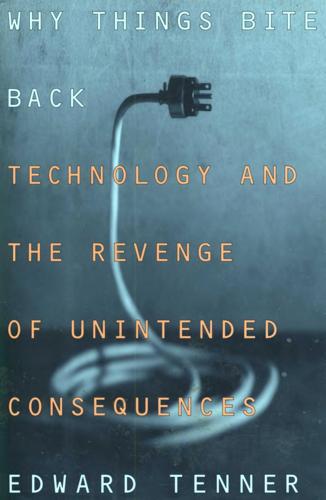
Why Things Bite Back: Technology and the Revenge of Unintended Consequences
by
Edward Tenner
Published 1 Sep 1997
Today we know that bad geography, charts, and compasses, and poor navigation, complicated by fog and unpredictable currents, were mainly to blame. To contemporaries, though, the lesson was a new urgency in the search for a way to determine longitude at sea. Of course, a valid method would in turn make possible more accurate printed aids to navigation. The question of longitude was not immediately supported officially; only seven years later, in 1714, was an Act of Parliament passed, offering up to £2o,000—at least $1 million in today's purchasing power—for a method of determining longitude on an oceangoing vessel. Entrepreneurs and cranks had been at work on solutions ever since the wreck, proposing lines of ships somehow "anchored" in mid-ocean, telepathic goats, and even dogs communicating through a "sympathetic powder" said by its promoters to relay sensations from an animal on land to one at sea after having been sprinkled on both.
…
Entrepreneurs and cranks had been at work on solutions ever since the wreck, proposing lines of ships somehow "anchored" in mid-ocean, telepathic goats, and even dogs communicating through a "sympathetic powder" said by its promoters to relay sensations from an animal on land to one at sea after having been sprinkled on both. But the prize, after more than another decade had passed, attracted the attention of the gifted clockmaker John Harrison, who built a chronometer that met the specifications of the act. The steps and the time it took him to refine his timepiece (along with the fact 2 : that he did not secure payment of his claims until 1773, when he was eighty) are not the point here. What matters is that the magnitude of the Scilly Isles wreck eventually justified the great reward offered.
…
The first great modern stimulus from disaster may have been the defeat of the Spanish Armada in 1588. The economic historian David Landes has speculated that this greatest setback in the history of Spain was what led its king Philip III to offer a perpetual pension of 6,000 ducats to "the discoverer of the longitude" when he ascended the throne ten years later. (Landes is not sure, however, what method would have kept the surviving ships from their fate on the rocks of Ireland and the Orkney Islands.) In France the Duc d' Orléans made a comparable offer. From Galileo to Newton, most of the giants of the scientific revolution of the late sixteenth and seventeenth centuries, with or without prizes in mind, joined the search.
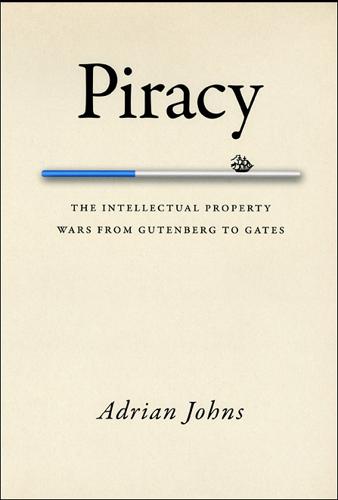
Piracy : The Intellectual Property Wars from Gutenberg to Gates
by
Adrian Johns
Published 5 Jan 2010
“A book is a combination of ideas,” argued Donaldson’s camp; “so is a machine.” Both were the result of “invention,” and all attempts at distinction were “unintelligible.” Both might be kept secret, but as soon as they were published, they were naturally open to all. Yates cited John Harrison – inventor of the chronometer that solved the longitude problem – to confirm as much. “Every Reason that can be urged for the Invention of an Author may be urged with equal Strength and Force, for the Inventor of a Machine,” he insisted. “Original Inventions stand upon the same Footing, in Point of Property, ... whether the Case be mechanical, or Literary; whether it be an Epic Poem, or an Orrery.”
…
Many of the most pressing problems of the age – philosophical as well as political and military – concerned the sea. The problem of the longitude is only the best known of them: anyone who furnished a reliable and portable technique for determining the longitude of a ship far removed from its home port would become rich, and would vastly enhance the power of the nation that possessed the secret. Aspirants to “solve the longitude” included not only men like Edmond Halley but any number of otherwise obscure “projectors.” By the early eighteenth century they had become a running joke. But as well as the longitude, the sea presented other issues demanding explanation, including the phenomena of the tides.
…
By 1718 London’s theatergoers could even go to see the leading actor of the day, Colley Cibber, playing the role of Peter Pirate, “a Bookseller by Trade, but broke lately,” in the latest comedy. Mr. Pirate personified all the associations of his caste, with his obsession with “credit,” his claims to have solved the longitude, and his memory of “a dose of Antimony” administered to him by a Wit (“and I have never been my own Man again since”). If the Whig defense of 1688 rested on a principle of property – as it largely did – then piracy, like stockjobbing, represented the weakness, amorality, ambition, and transgression that came with it.
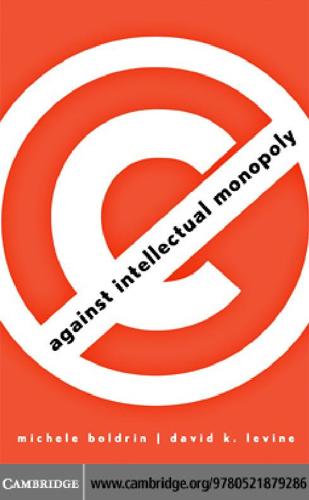
Against Intellectual Monopoly
by
Michele Boldrin
and
David K. Levine
Published 6 Jul 2008
Consider the following discussion of some of the theoretical implications of the 1714–73 saga of John Harrison, his clocks, and the Board of Longitude prize. What Parliament had solicited was knowledge. What it got were four clocks, all different. Compare Harrison’s clocks with the astronomical algorithm that the board had hoped for. Such an algorithm did, in fact, materialize. The so-called lunar method used observations of distance between the moon and the stars to infer longitude. The lunar method had the essential feature of a pure public good: the tables that linked the observations to longitude were costly to compile in the first place, involving countless calculations, but once this was done, anyone could use the template at only the additional cost of owning the tables.
…
If I were to take your clock or your table of calculations, that would certainly make it difficult for you to make use of the same. It is true that the tables were eventually made public together with the template of how to build the clock. This, however, is a consequence of the existence of the prize set by Parliament and administered by the Board of Longitude. The tables were “sold to the public” in exchange for the 10,000 pound prize, or at least for the promise of it, as it took a while for the prize to be awarded to Harrison. Absent the prize, Harrison would have most likely sold the clocks to skippers or shipowners in the most common of all private transactions: money for goods.
…
P1: KXF head margin: 1/2 gutter margin: 7/8 CUUS245-IND cuus245 978 0 521 87928 6 April 29, 2008 10:0 Index abolition of intellectual property, 253–257 Bach, Johann Christian, 187 benefits of, 245 Badische Chemical Factory, 88 need for gradual approach to, 244–245 Baen, 35–36 reasons for, 243–244 Baker-Hamilton Commission, 25–26 advertising, sale of, 143 Bayh-Dole Act, 228 Africa, 64, 69, 258–259 Becker, Gary, 163–164 agglomeration, 164 Benetton, 56–57 agriculture, 51–56 Bessen, J., 77, 83–84, 197 impact of patents on, 197 biomedical research, patents as incentive in, innovation in, 52, 79 227–228 in Iraq, 81 biotechnology, 221–222 market for, 128–129 Blackberry, 5 oligopolization of, 79–80 Board of Longitude prize, 154–155 patents in, 52–53, 55–56, 79–82 Boldrin, M., 129 in poor and developing countries, Sonny Bono Copyright Term Extension Act 80–81 of 1998 (CTEA), 7–8, 100–103, 104 profit in, 129 books, 22–26. See also publishing industry PVPA, 79 availability of and copyright, 103–104t, rice, 81 105 AIDS drugs, 69–71, 227, 258–259 Google Print, 89–90 airplane industry, 87–88 lack of copyright for in airplanes, simultaneous discovery in, nineteenth-century America, 22–23 206–207 profitability of without copyright, 22–26 Almeria, Spain, 56, 57 Borges, Jorge, 154 Amazon.com, 168–169 Boulton, Matthew, 1–3, 4–5, 11–12 American Seed Trade Association, 53 bribery in pharmaceutical industry, animals.
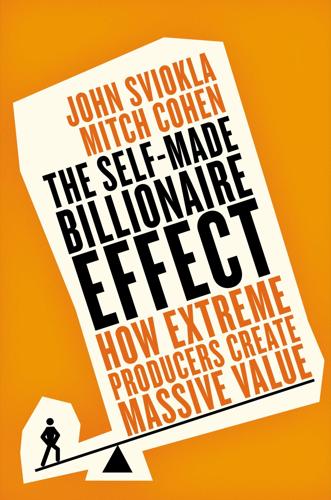
The Self-Made Billionaire Effect: How Extreme Producers Create Massive Value
by
John Sviokla
and
Mitch Cohen
Published 30 Dec 2014
HOW EXECUTIVES CAN APPLY THE LESSONS OF PATIENT URGENCY Businesses have understood time’s integral role in the success or failure of commerce since the early days of trade. As far back as 1736, when the British inventor John Harrison conducted the first sea test of the marine chronometer, a device that used time to accurately estimate a ship’s latitude and longitude at sea, businesses were dealing with the challenge posed by the uncertainty of time. Before Harrison’s invention, sea captains could only identify latitude by measuring the angle of the sun at noon, when it reached its apex, but without an accurate timepiece they had no way to measure longitude, and so quite literally had no idea where in the world they were at any given moment.
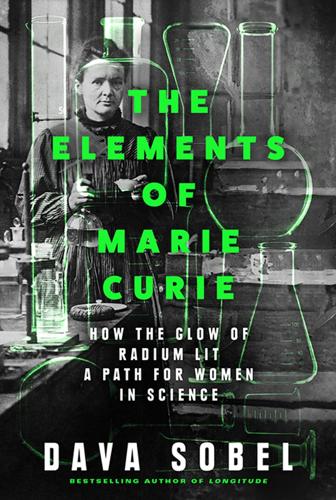
The Elements of Marie Curie
by
Dava Sobel
Published 20 Aug 2024
Also by Dava Sobel The Glass Universe: How the Ladies of the Harvard Observatory Took the Measure of the Stars And the Sun Stood Still: A Play A More Perfect Heaven: How Copernicus Revolutionized the Cosmos The Planets Letters to Father: Suor Maria Celeste to Galileo, 1623–1633 (translated by Dava Sobel) Galileo’s Daughter: A Historical Memoir of Science, Faith, and Love The Illustrated Longitude (with William J. H. Andrewes) Longitude: The True Story of a Lone Genius Who Solved the Greatest Scientific Problem of His Time About the Publisher Australia HarperCollins Publishers Australia Pty. Ltd. Level 13, 201 Elizabeth Street Sydney, NSW 2000, Australia www.harpercollins.com.au Canada HarperCollins Canada Bay Adelaide Centre, East Tower 22 Adelaide Street West, 41st Floor Toronto, Ontario M5H 4E3, Canada www.harpercollins.ca India HarperCollins India A 75, Sector 57 Noida, Uttar Pradesh 201 301, India www.harpercollins.co.in New Zealand HarperCollins Publishers New Zealand Unit D1, 63 Apollo Drive Rosedale 0632 Auckland, New Zealand www.harpercollins.co.nz United Kingdom HarperCollins Publishers Ltd. 1 London Bridge Street London SE1 9GF, UK www.harpercollins.co.uk United States HarperCollins Publishers Inc. 195 Broadway New York, NY 10007 www.harpercollins.com
…
THE ELEMENTS OF MARIE CURIE HOW THE GLOW OF RADIUM LIT A PATH FOR WOMEN IN SCIENCE Dava Sobel Copyright 4th Estate An imprint of HarperCollinsPublishers 1 London Bridge Street London SE1 9GF www.4thEstate.co.uk HarperCollinsPublishers Macken House 39/40 Mayor Street Upper Dublin 1 D01 C9W8 Ireland This eBook first published in Great Britain by 4th Estate in 2024 Copyright © John Harrison & Daughter, Ltd. 2024 Cover images © Getty Images Excerpt(s) from Periodic Table by Primo Levi, translated by Raymond Rosenthal, translation copyright © 1984 by Penguin Random House LLC. Used by permission of Schocken Books, an imprint of the Knopf Doubleday Publishing Group, a division of Penguin Random House LLC.
…
R., 248, 280 Wojciechowski, Stanislaw, 207 Women’s Social and Political Union, 128–29 Wood, Robert W., 142 World War I, 148, 151–60, 161–70, 171, 174, 272 World War II, 260–61, 262–63, 269, 271 X–rays general, 35–37 medical uses, 152–53, 155–63, 166–70, 172, 238–39 Nobel Prize for research on, 54–55 radiology courses, 166–67, 168, 172 uranic ray comparison, 70 Yamada, Nobuo, 198–99, 218, 223–24 Yovanovitch, Dragolijub, 196, 198, 214 Zeeman, Pieter, 246, 265 Zorawski family, 9–11 About the Author DAVA SOBEL is the author of the international bestseller Longitude, the bestselling Pulitzer Prize finalist Galileo’s Daughter, The Planets, A More Perfect Heaven, And the Sun Stood Still and The Glass Universe. A former New York Times science reporter and current editor of the Meter poetry column in Scientific American, she lives on Long Island. Also by Dava Sobel The Glass Universe: How the Ladies of the Harvard Observatory Took the Measure of the Stars And the Sun Stood Still: A Play A More Perfect Heaven: How Copernicus Revolutionized the Cosmos The Planets Letters to Father: Suor Maria Celeste to Galileo, 1623–1633 (translated by Dava Sobel) Galileo’s Daughter: A Historical Memoir of Science, Faith, and Love The Illustrated Longitude (with William J.
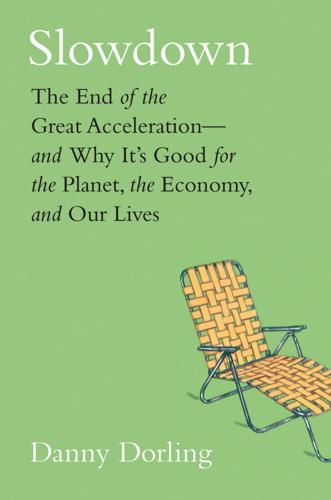
Slowdown: The End of the Great Acceleration―and Why It’s Good for the Planet, the Economy, and Our Lives
by
Danny Dorling
and
Kirsten McClure
Published 18 May 2020
It spread from The Hague and Amsterdam to London with the invasion of England, which the English still call the Glorious Revolution of 1688. Revolution means change. Within a century of Huygens’s invention, English carpenter and clockmaker John Harrison was producing marine chronometers, designed to be so accurate that they could be used to determine precise longitude when out in the ocean. To achieve this required losing or gaining less than a second a year in error. Today the accuracy of timekeeping is so high that there is little more to be achieved. As a student at Newcastle University in the 1980s, I once met a “time lord” whose job it was to ensure that the very early internet kept time to a fraction of a nanosecond.
…
The final year of this generation saw a dip in births not just in the United Kingdom but also in the United States.15 If it is at all possible to delimit a generation neatly, then for these two countries the Generation W dates work quite well, but they were not chosen because they work well. They are determined by when people born after 1901 themselves most often had children, and by when their grandchildren were born. They also tell you when your parents and grandparents were most likely to have been born. Niger is on the same longitude as the United Kingdom, but further south by more than thirty degrees of latitude. East Timor is about as far away as it is possible to get from the center of the United States—it is literally on the opposite side of the planet—and yet it was also a place where fertility was falling, just as in the United Kingdom and the United States, until the great disruption of war came.
…
Spreadsheets containing the timelines in this book (and many others) are also available at www.dannydorling.org, and they also illustrate how one can be drawn. 7. Michael Friendly, Pedro Valero-Mora, and Joaquín Ibáñez Ulargui, “The First (Known) Statistical Graph: Michael Florent van Langren and the ‘Secret’ of Longitude,” American Statistician 64, no. 2 (2010): 174–84, http://datavis.ca/papers/langren-TAS09154.pdf. 8. There were very few exceptions to the runaway population growth in the year 1968. The population of Palestine was falling by 2.1 percent a year following the Six-Day War. So was that of Portugal under dictatorship (by 0.7 percent a year) and the Falkland Islands (by 0.5 percent annually).
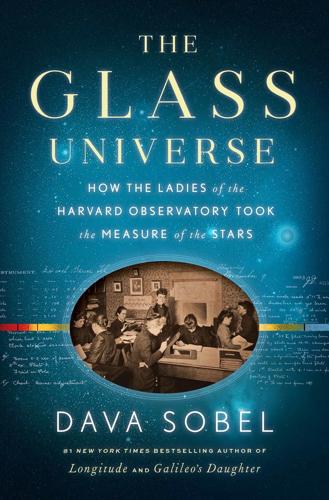
The Glass Universe: How the Ladies of the Harvard Observatory Took the Measure of the Stars
by
Dava Sobel
Published 6 Dec 2016
Also by Dava Sobel Longitude Galileo’s Daughter Letters to Father The Planets A More Perfect Heaven And the Sun Stood Still (a play) VIKING An imprint of Penguin Random House LLC 375 Hudson Street New York, New York 10014 penguin.com Copyright © 2016 by John Harrison and Daughter, Ltd. Penguin supports copyright. Copyright fuels creativity, encourages diverse voices,promotes free speech, and creates a vibrant culture. Thank you for buying an authorized edition of this book and for complying with copyright laws by not reproducing, scanning, or distributing any part of it in any form without permission.
…
Selina Bond, for example, was the daughter of the observatory’s revered first director, William Cranch Bond, and also the sister of his equally revered successor, George Phillips Bond. She was currently assisting Professor William Rogers in fixing the exact positions (in the celestial equivalents of latitude and longitude) for the several thousand stars in Harvard’s zone of the heavens, as part of a worldwide stellar mapping project administered by the Astronomische Gesellschaft in Germany. Professor Rogers spent every clear night at the large transit instrument, noting the times individual stars crossed the spider threads in the eyepiece.
…
Radio astronomy A complement to optical astronomy; the study of electromagnetic radiation at wavelengths much longer than those of visible light. Redshift The shift of known spectral lines toward the red end of the spectrum, caused by the object’s motion away from the observer. Right ascension The celestial equivalent of longitude for stating star positions. Royal Astronomical Society The world’s first organization of astronomers, founded in 1820 as the Astronomical Society of London. Seeing The quality of the observing conditions, ideally cloudless skies and minimal movement of air. Astronomers rate seeing on a scale ranging from one (very poor) to ten (perfect).
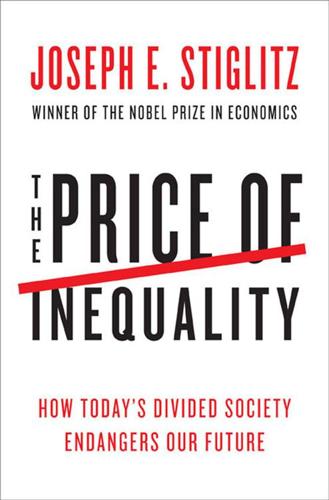
The Price of Inequality: How Today's Divided Society Endangers Our Future
by
Joseph E. Stiglitz
Published 10 Jun 2012
There are certainly contexts in which monetary prizes have the potential to focus minds on a thorny problem and deliver a solution. A famous example is detailed in Dava Sobel’s Longitude: The True Story of a Lone Genius Who Solved the Greatest Scientific Problem of His Time. As she reports, in the Longitude Act of 1714, the British Parliament set “a prize equal to a king’s ransom (several million dollars in today’s currency) for a ‘Practicable and Useful’ means of determining longitude.” This was critical to the success of transoceanic navigation. John Harrison, a watchmaker with no formal education but a mechanical genius, devoted his life to this quest and ultimately claimed the prize in 1773.55 However, it is a great leap from the power of monetary incentives to focus minds on a great quest to the idea that monetary incentives are the key to high performance in general.
…
Hoff, “Market Failures and the Distribution of Wealth: A Perspective from the Economics of Information,” Politics and Society 24, no. 4 (1996): 411–32; and Hoff, “The Second Theorem of the Second Best,” Journal of Public Economics 25 (1994): 223–42. 55. The exciting story is told in the bestseller by Dava Sobel, Longitude: The True Story of a Lone Genius Who Solved the Greatest Scientific Problem of His Time (New York: Walker, 1995). 56. Technically, the problems with incentive pay arise when there are information asymmetries. The employer doesn’t fully know the quality of the products produced by the worker (otherwise, he would specify that).
…
housing discrimination, 70–71, 308 housing market: bubble in, 54, 85, 88–89, 183, 191–93, 211, 232, 243, 262, 378, 388 collapse of, 3, 8, 13, 89, 91, 169, 198, 223, 285, 294, 296, 302, 311, 314, 363 recovery in, 284–85 see also foreclosures; mortgage restructuring; predatory lending; subprime crisis housing subsidies, 74 human rights, 59, 155 ideas: democracy and, 185 evolution of, 156–59, 160 immigration, 53, 227, 296 imprisonment, 15, 70, 303, 304–5 incentive pay, 78–79, 87, 107, 108–14, 153–54, 163, 173, 205, 342, 343, 347 income redistribution, 85, 211 criticisms of, xxii, 106 government’s role in, 30–31, 71–76, 155, 238, 279 political limitation of, 32, 77 India, 152–53, 196–97, 249 Industrial Revolution, 30, 105, 345 inequality: alternative models of, 81–82 consequences of, 83–117, 125, 133–35, 147, 148, 186, 187–206, 233 deficit reduction and, 221–24 determinants of, xii, 28, 30–31, 33–39, 79–82, 267, 271, 276 educational, xiv, 19, 20, 30–31, 68, 75, 94, 102, 108, 160, 307–8, 322 efficiency and, 106–16, 117 globalization’s effect on, 60, 63–64, 79, 80, 140, 142, 144, 145 government’s role in, 6, 28, 30–32, 52, 57–58, 74, 75–76, 77, 79, 81, 82, 147, 153, 172–73, 190, 207 historical, 29–30, 332 income, 2, 3, 4, 7–8, 9, 22, 24, 25, 26, 27, 29, 30, 52, 53, 54, 55, 56, 57, 71, 72, 77, 79–80, 81, 85, 86, 127, 153, 178, 183, 202, 233, 240, 241, 267, 294–95, 296, 297, 298, 299, 300, 311, 328, 332, 335; see also income redistribution and instability, 5, 84–92, 117, 240 justifications for, 27, 29, 30, 77–78, 81, 154, 156, 342 lifetime, 26, 106, 310, 311 macroeconomic factors in, 238–64 markets’ effect on, 52–82 perceptions of, 127, 147–48, 152–55, 159, 160, 179, 184 remedies for, 29, 107, 114–17, 213, 237, 268–85, 287 rent seeking and, 32, 38, 40, 77, 107, 173, 213 and social distance, 148, 160 societal effects of, xii, xvi–xvii, xx, xxii, 2, 18, 20, 27, 65, 76, 84, 90, 100, 104–6, 117, 326–27 societal factors in, 53, 64–71, 82, 84, 282 inflation, 219, 239, 240, 241, 242, 248–49, 255, 259–60, 261, 262, 263, 279, 365, 378, 383, 384, 385, 391, 392, 393 Informant, The, 320 infrastructure, 88, 92, 93, 102, 115, 117, 155, 216, 267, 283 innovation: in business, 35, 41, 46, 78, 96, 178–79, 314, 315 direction of, 58, 244, 270, 283–84 patent law and, 43, 202 scientific, 41, 78, 93, 100, 202 insurance industry, 176, 177, 228, 274, 276 intellectual property, 140, 202–3, 316, 323, 354, 375 see also patents interest rates, 3, 7, 49, 71, 80, 86, 88, 110, 177, 208, 209, 217, 234, 242, 243, 244, 245, 251, 259, 260, 261, 262, 283, 380, 382, 385, 386, 392 International Monetary Fund (IMF), 60, 61, 91–92, 138, 141, 181–82, 231, 316, 353 Internet, 41, 45, 87, 115, 174, 349, 358 interns, internships, 76, 332 intrinsic rewards, 111–12 investment: globalization and, 60, 73, 74 private, 6, 73, 74, 86, 87, 88, 92, 222, 225, 226, 230, 235, 243, 244, 283, 335, 382 public, 23, 40, 80, 84, 88, 92–94, 102, 114, 115, 155, 174, 216, 217, 218, 230, 232–33, 263, 267, 273, 279, 281, 282–83, 381 Iran, 22, 23 Iraq War, 101, 143, 176, 209, 210, 211, 340 Ireland, financial crisis in, 182, 210, 219, 220, 255, 256 irrigation, 122, 322 Israel, 14, 262 Italy, 18 financial crisis in, 138–39, 255, 389–90 Japan, 14, 19, 308 Jobs, Steve, 41, 315 JPMorgan Chase, 345, 374, 388 judges, 44, 200, 373 Justice Department, U.S., 199, 318 Kerry, John, 359 Kessler, David, 357 Keynes, John Maynard, 86, 105, 151, 267 King, Mervyn, 248 Korea, 16, 19 Krueger and Mas, 104 Krugman, Paul, 137 labor, 55, 152 bargaining power of, 61, 64, 277, 281; see also labor unions demand for, 38, 53–57, 61, 63 in developing world, 63, 64, 326, 397 discrimination in, 68–70, 71 fairness in, 103–4, 127 free mobility of, 59–60, 61–62 globalization’s effect on, 56, 59–60, 61, 63, 64, 80, 233, 277, 280, 281, 324, 325 Great Recession’s effect on, 29, 57, 65, 67, 91, 124–25, 231, 241–42, 250, 380 macroeconomic policies affecting, 80, 225, 279 motivation of, 102, 103 polarization of, 8–9, 56, 79, 80, 133, 277 public-sector, 57, 322 in recessions, 29, 67, 124 and social capital, 124–25 structural changes in, 53–54, 56, 232–33, 263, 280–81, 285 technology’s effect on, 53, 54–56, 63, 79, 80, 277, 280, 283, 334 women in, 14 work hours and, 9, 14, 26, 327 see also employment; unemployment; wages labor unions, 38, 57, 64–65, 66, 67, 79, 80, 281–82, 327 Latin America, 23, 40, 84, 231 Latvia, austerity in, 231 Lauder, Ronald, 72 lawyers, 42–43, 99–101, 190, 203, 339 Lay, Ken, 178 legal system, U.S., 187–206 alternative frameworks for, 188, 202 banks’ deception in, 198, 199, 200, 201, 373 burden of proof in, 199–200 contracts in, 197 corporate advantages in, 66, 132, 189–90, 191, 203, 272, 327, 374 costs in, 100, 189–90, 202 distributive consequences of, 190, 193, 271, 317, 370 economic bias in, 44 Federal Reserve accountability in, 252 financial crisis prosecution in, xv–xvi, 70, 119, 199, 372, 373 financial sector’s favoring in, 191–202, 203, 204–6 information asymmetries in, 271, 368 political influence in, 44, 190–91, 200 property rights in, 190, 194, 197, 198, 199 purpose of, 100, 188–91 reform of, 273 rent seeking in, 42, 43, 203, 273 and social responsibility, 121 unfairness in, 42, 43, 100, 189–90, 191–202, 203, 206, 368, 373, 375 Lehman Brothers, 253, 313, 390 Leme, Paulo, 353 Lenin, Vladimir, 354 Lessig, Lawrence, xxiv LG, 203 Lincoln, Abraham, 137 List, John, 347 lobbying, 48, 95, 101, 185, 196, 319, 324, 325, 338 Lockheed Martin, 210 London Interbank Offered Rate (Libor), 47 Longitude (Sobel), 109 Lula da Silva, Luiz Inácio, 5, 139, 353 Luxembourg, 183, 286 manufacturing: compensation shifts in, 65, 328 job losses in, 54, 56, 57, 232–33, 285, 321 societal impact of, 156 marginal productivity theory, 30, 33, 77, 267 marketing, 150–51, 160, 162, 357, 359 Marlboro Man, 151, 354 marriage, economic insecurity and, 15, 303 Marshall, Alfred, 102 Marx, Karl, 30, 292 Massachusetts, 200–201 McCarty, Nolan, xxiv McDonald’s, 381 media, 128–29, 134, 135, 136, 160, 163, 252, 272, 286, 335, 348, 349, 358 Medicaid, 14, 228, 277, 378 Medicare, 17, 48, 97, 147, 163, 176, 210, 228–29, 265, 320, 355, 364, 378, 380 Mexico, 16, 42, 64, 138, 176, 365 MF Global Holdings, 313 microcredit, 196–97 Microsoft, 42, 44, 45–46, 74, 203, 317, 318, 319 middle class, 54, 117, 137 assistance to, 29, 274 economic insecurity of, xvii, 12–14, 23, 26, 103, 265–66 globalization’s effect on, 63, 64 Great Recession’s effect on, 10 hollowing out of, 2, 9, 25, 38, 84, 133, 300 income of, 3, 4, 7, 8, 9, 14, 25, 54, 56, 57, 63, 72, 240, 297, 298, 300, 385 recovery of, 29, 225 tax deductions for, 222–24, 379 unfair policies toward, xv, xxii wealth sources of, 3, 8, 13–14, 91, 167 Middle East, 40 see also Arab Spring Mill, John Stuart, 368 monetarism, 257, 258–59 monetary policy, 85, 86, 88, 133, 177, 208, 234, 239–40, 248, 250, 251, 252, 254, 257–58, 259, 261, 262, 263–64, 380, 382, 385, 389, 392 distributive consequences of, 243–45, 264, 279 idea-shaping in, 256–63 monopolies 31, 32, 35, 39–47, 95, 97, 140, 213, 270–71, 274, 316, 318 moral hazard, 171, 229, 256, 362, 363 Mortgage Electronic Registry System (MERS), 198, 201, 374 mortgage fraud, 198, 201, 372, 373 mortgage restructuring, 169–72, 201–2, 284–85, 362, 363 mortgages, tax deductions for, 222, 223, 379 mortgage securities, 205 Mosaic, 318 motivation, 102, 103, 111–12 Motorola, 203 Mozilo, Angelo, 333 Mueller, Edward, 42 Mullainathan, Sendhil, 103 municipal bonds, 212, 378 National Academy of Sciences, 26 National Center for Supercomputing Applications, 318 National Commission on the Causes of the Financial and Economic Crisis in the United States, 357, 358 National Economic Council, 180 Netherlands, 19, 22 Netscape, 45–46, 318 New Deal, xiii, 88, 231 Newfoundland, 138 New York Times, 11, 119, 205 Nokia, 203 North American Free Trade Agreement, 141 Norway, 22, 23, 183, 220 NTP, Inc., 203 Obama, Barack, x, 352 deficit reduction by, 207 and ethanol subsidy, 51 Federal Reserve nominees of, 319 financial crisis response of, xv, 168, 169, 361 health care program of, 14, 163, 276 tax position of, 395 Obama administration, xiv, 67, 170, 171, 200, 250, 284, 362, 396 Occupy Wall Street, ix–xiv, xix–xxi, 102, 116, 118, 127, 134, 345 “Of the 1%, for the 1%, by the 1%” (Stiglitz), xi Olin Foundation, 44, 359 1 percent: definition of, xxii economic framework’s favoring of, xx, xxii, 31, 34, 62, 67, 91, 117, 131, 142, 173, 174, 189, 191, 204, 239, 244, 245–46, 264, 348, 354 economic security of, 18, 19, 25 globalization’s benefits to, 62, 64, 142 idea-shaping by, 129, 134, 137, 146–86, 211, 236, 256, 287 income of, 2, 4, 8, 25, 52, 72, 85, 215, 267, 294, 295, 297, 298, 299, 300, 315, 332, 335 legal framework’s favoring of, 188, 191, 202, 206, 273 media’s control by, 129, 134, 286 political power of, xix, 32, 67, 83, 86, 89, 101, 118, 119, 120–21, 129, 131–33, 134, 137, 138, 146, 191, 267, 285, 348, 351 public perception of, 20–21, 146, 154, 159, 358 reform aimed at, 29, 268–74 rent seeking by, 32, 38, 41–43, 77 saving by, 85, 88, 223, 275 small government preference of, 93 social contract violation by, xvi–xvii social contributions of, 27, 41, 77–78, 96, 266 social norms’ shaping by, 53 taxation of, 5, 38, 42–43, 62, 71–73, 74, 76, 77, 84, 86, 87–88, 114, 115, 116, 138, 142, 159, 167, 208, 209, 211, 212, 214–15, 218, 221, 223, 224, 225, 226, 256, 274, 275, 294, 312, 335, 344, 360, 383, 394 value change in, 288 wealth of, 2, 3, 8, 25, 32, 38, 56, 72, 73, 80, 84, 166–67, 295 see also corporations; financial sector Organization for Economic Cooperation and Development (OECD), 16, 185 Orshansky, Mollie, 305 Ostrom, Elinor, 322 overdrafts, 194, 370 Pager, Devah, 69 Papua New Guinea, 184 patents, 43, 202, 203, 316, 374, 375 see also intellectual property pension funds, 227–28 Personal Responsibility and Work Opportunity Reconciliation Act, 17 Pew Foundation, 20 pharmaceutical industry: government munificence toward, 40, 48, 97, 210, 211, 224, 228, 272, 276 research in, 97 see also health industry Pierson, Paul, xxiv Piketty, Thomas, xxiii, 114 Pinochet, Augusto, 258 polarization, 8–9 Polarized America (McCarty, Poole, and Rosenthal), xxiv police lineups, 149 police states, 125 politics, U.S.: cognitive capture in, 161–62 corporate influence in, 34, 37, 41, 47, 48, 50, 51, 61, 62, 95, 99, 101, 111, 131–32, 135, 136–37, 200, 202, 285, 286, 319, 324, 325, 338, 350 distributive consequences of, 31, 52, 58, 239, 277, 278, 322 economy’s linkage with, xi, xix–xx, xxiv, 34, 38–39, 47, 52–53, 59, 65, 66, 89, 118, 131, 135, 138, 151, 173, 266, 287, 288–89, 348 idea-shaping in, 129, 137, 148, 149, 151–52, 153–55, 159–62, 163, 166–72, 175, 180, 185, 186, 285 legal consequences of, 190–91 media’s role in, 129, 134, 135, 136, 160, 163, 286 reform of, 135–36, 267, 285–86 regulatory capture in, 47–48, 248, 249–50, 253, 264 societal factors in, 64 unfairness in, x, xi, xii, xviii–xx, 31–32, 39, 41, 83, 101, 114–15, 118, 119, 120–21, 127, 129, 131–33, 134, 135, 136–37, 138, 144, 146, 191, 196, 200, 202, 267, 285, 286, 319, 324, 325, 338, 348, 350, 351 voting in, 119–21, 129–31, 133, 134, 135, 137, 286, 288, 325, 345, 349, 350, 351, 355 see also democracy, U.S.; government, U.S.
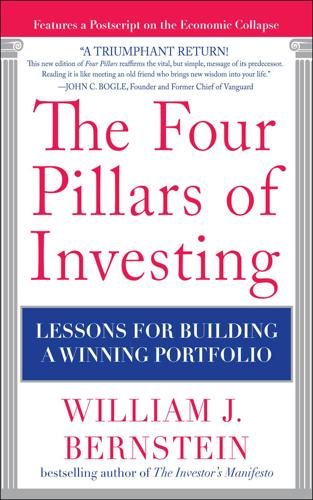
The Four Pillars of Investing: Lessons for Building a Winning Portfolio
by
William J. Bernstein
Published 26 Apr 2002
The best example of this is a device invented about the same time as the blowing of the canal bubble: the marine chronometer. Profitable sea trade requires accurate navigation. This, in turn, demands the precise measurement of latitude (north/south position) and longitude (east/west position). The determination of latitude is a relatively easy task, and by the mid-eighteenth century, had been practiced for hundreds of years—a sea captain simply needs an accurate midday measurement of the sun’s elevation. But longitude is a much tougher nut. By the eighteenth century, seafarers realized that the most likely route to success lay in the development of a highly accurate timepiece. If a navigator could determine the local solar noon—the maximum elevation of the sun—and also know the time in London at the same moment, he then would know just how far east or west of London he was.
…
If a navigator could determine the local solar noon—the maximum elevation of the sun—and also know the time in London at the same moment, he then would know just how far east or west of London he was. This required a timepiece that could keep time to within one-quarter of a second per day over a six-week journey—at sea. Master craftsman John Harrison finally accomplished this amazing feat in 1761. His clock—the so-called “H4,” is considered a technological marvel even today; two and a half centuries ago, it was the equivalent of the space shuttle. But the key point is this: neither Harrison, nor his heirs, nor his professional successors ever made very much money from this crucial invention.
…
Ritter, Jay R., “The Long Run Performance of Initial Public Offerings.” Journal of Finance, March, 1991. Santayana, George, The Life of Reason. Scribner’s, 1953. Siegel, Jeremy J., Stocks for the Long Run. McGraw-Hill, 1998. Smith, Edgar L., Stocks as Long Term Investments. Macmillan, 1924. Sobel, Dava, Longitude. Walker & Co., 1995. Strouse, Jean, Morgan: American Financier. Random House, 1999. White, Eugene N., ed., Crashes and Panics. Dow Jones Irwin, 1990. Chapter 7 Benzarti, S., and Thaler, Richard H., “Myopic Risk Aversion and the Equity Premium Puzzle.” Quarterly Journal of Economics, January 1993.
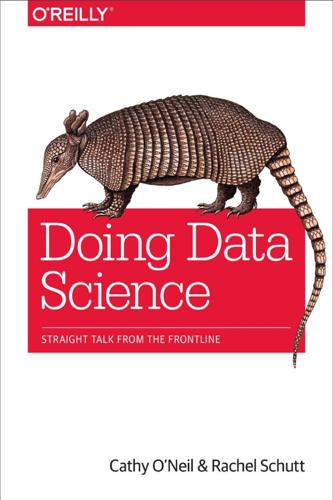
Doing Data Science: Straight Talk From the Frontline
by
Cathy O'Neil
and
Rachel Schutt
Published 8 Oct 2013
The problem is given, the dataset is given, and the metric of success is given. Moreover, the prizes are established up front. Let’s get a bit of historical context for crowdsourcing, since it is not a new idea. Here are a few examples: In 1714, the British Royal Navy couldn’t measure longitude, and put out a prize worth $6 million in today’s dollars to get help. John Harrison, an unknown cabinetmaker, figured out how to make a clock to solve the problem. In 2002, the TV network Fox issued a prize for the next pop solo artist, which resulted in the television show American Idol, where contestants compete in an elimination-round style singing competition.
…
query_list$matched) unmatched <- length(unmatched_inds) # try changing STREET/AVENUE to ST/AVE query_list[unmatched_inds,1:4] <- addrListLookup (data.frame(1:unmatched,gsub(" WEST "," W ", gsub(" EAST "," E ",gsub(" STREET"," ST", gsub(" AVENUE"," AVE",add_sample[unmatched_inds,1])))), rep("NEW YORK",times=unmatched), rep("NY",times=unmatched), add_sample[unmatched_inds,2],rep("US",times=unmatched)))[,1:4] query_list$matched <- (query_list$latitude != 0) unmatched_inds <- which(!query_list$matched) unmatched <- length(unmatched_inds) ## have to be satisfied for now add_sample <- cbind(add_sample,query_list$latitude, query_list$longitude) names(add_sample)[3:4] <- c("latitude","longitude") add_sample <- add_sample[add_sample$latitude!=0,] add_use <- merge(mt,add_sample) add_use <- add_use[!is.na(add_use$latitude),] # map coordinates map_coords <- add_use[,c(2,4,26,27)] table(map_coords$neighborhood) map_coords$neighborhood <- as.factor(map_coords$neighborhood) geoPlot(map_coords,zoom=12,color=map_coords$neighborhood) ## - knn function ## - there are more efficient ways of doing this, ## but oh well... map_coords$class <- as.numeric(map_coords$neighborhood) n_cases <- dim(map_coords)[1] split <- 0.8 train_inds <- sample.int(n_cases,floor(split*n_cases)) test_inds <- (1:n_cases)[-train_inds] k_max <- 10 knn_pred <- matrix(NA,ncol=k_max,nrow=length(test_inds)) knn_test_error <- rep(NA,times=k_max) for (i in 1:k_max) { knn_pred[,i] <- knn(map_coords[train_inds,3:4], map_coords[test_inds,3:4],cl=map_coords[train_inds,5],k=i) knn_test_error[i] <- sum(knn_pred[,i]!
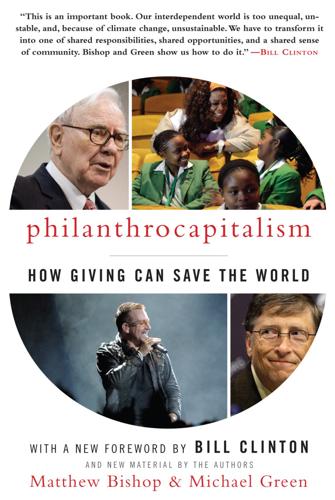
Philanthrocapitalism
by
Matthew Bishop
,
Michael Green
and
Bill Clinton
Published 29 Sep 2008
ALL SHALL HAVE PRIZES The nineteenth-century Swedish munitions baron Alfred Nobel is the most famous prize giver—an act of atonement for the invention of dynamite, so the story goes—rewarding annually since 1901 achievements in physics, chemistry, medicine, literature, and peace (the economics prize is not actually a Nobel Prize). Prizes to incentivize innovation also have a long history. The race to win a £20,000 prize offered by the British Parliament in the eighteenth century for a solution to how to measure longitude, and the struggle of clockmaker John Harrison to convince the government-appointed panel that he had won, is described in Dava Sobel’s 1995 bestseller, Longitude. Charles Lindbergh flew the Atlantic in 1927 to win a $25,000 prize offered by Raymond Orteig, a hotelier. Now they are back in fashion. The breakthrough moment came when SpaceShipOne won the $10 million X Prize, created by Peter Diamandis, for the first privately funded space flight.
…
London: Longman, 1988. Smith, A. An Inquiry into the Nature and Causes of the Wealth of Nations 1776. A facsimile of the first edition with an introduction by Edwin Connor, Chicago: University of Chicago Press, 1977. Smith, A. The Theory of Moral Sentiments. Amherst, NY: Prometheus Books, 2000. Sobel, Dava. Longitude: The True Story of a Lone Genius Who Solved the Greatest Scientific Problem of His Time. New York: Walker and Company, 2005. Soros, George. The Age of Fallibility: Consequences of the War on Terror. New York: PublicAffairs, 2006. Tayart de Borms, L. Foundations: Creating Impact in a Globalised World.

Future Crimes: Everything Is Connected, Everyone Is Vulnerable and What We Can Do About It
by
Marc Goodman
Published 24 Feb 2015
Such was the case when the British Parliament established the Longitude Prize in 1714 in an effort to help with maritime navigation in order to ensure the “safety and quickness of voyages, the preservation of ships, and the lives of men.” Though latitude (north-south positioning) was easy to measure using the position of the sun, until the early eighteenth century there was no way for sailors to calculate their position longitudinally from east to west. By an act of Parliament, the British government offered £20,000 (more than £1 million today) for a solution that could find longitude to within half a degree. The incentive prize inspired John Harrison, a self-educated working-class clock maker, to invent the marine chronometer, a clocklike device that solved the problem.
…
The incentive prize inspired John Harrison, a self-educated working-class clock maker, to invent the marine chronometer, a clocklike device that solved the problem. Two hundred years later, another incentive prize was launched, this time to stimulate advances in the nascent field of aviation. Charles Lindbergh became the first man to fly across the Atlantic, not just because of his sense of adventure, but because a seldom-recalled hotel magnate named Raymond Orteig offered $25,000 of his own money in 1919 as a prize to “the first aviator of any Allied Country crossing the Atlantic in one flight, from Paris to New York or New York to Paris.”
…
These locational data are increasingly being appended to more and more of your online transactions in so-called file metadata—that is, data that provide data about other information. For example, when most people take a photograph with their mobile phones, their locational data (GPS coordinates, longitude and latitude, and so forth) are embedded in the image file. When you upload those photographs and videos to Craigslist, Flickr, YouTube, Facebook, and hundreds of other services, those revealing locational metadata can be passed right along with the original file. For some apps, the request for your location is perfectly logical, such as with Google Maps or GPS navigation tools.
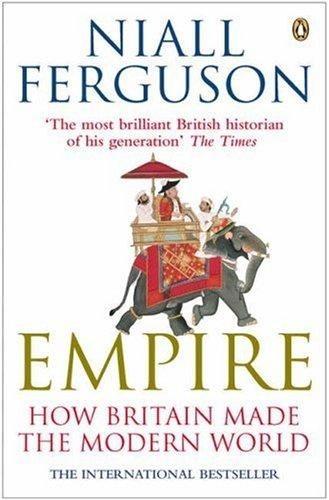
Empire: How Britain Made the Modern World
by
Niall Ferguson
Published 1 Jan 2002
The British were using not only technology but also science to rule the waves. When George Anson circumnavigated the globe with his six vessels in the 1740s, the cure for scurvy was unknown and John Harrison was still working on the third version of his chronometer for determining longitude at sea. The seamen died in droves; the ships frequently got lost. By the time Captain James Cook’s Endeavour sailed for the South Pacific in 1768, Harrison had won the Board of Longitude’s prize and Cook’s crew were being fed sauerkraut as an anti-scorbutic. It epitomized the new alliance between science and strategy that on board the Endeavour there was a group of naturalists, notably the botanist Joseph Banks, and that Cook’s voyage had a dual mission: to ‘maintain the power, dominion, and sovereignty of BRITAIN’ by laying claim to Australasia for the Admiralty and to record the transit of Venus for the Royal Society.
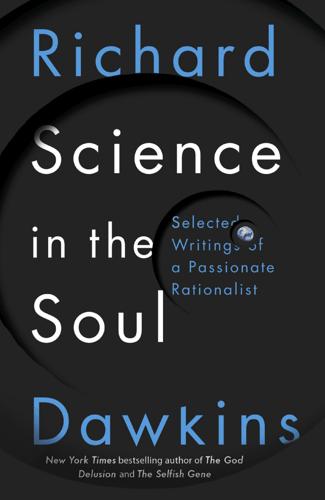
Science in the Soul: Selected Writings of a Passionate Rationalist
by
Richard Dawkins
Published 15 Mar 2017
But the interesting thing is that if the biological clocks are separated from the outside world, they carry on regardless. They truly are internal clocks. Jet-lag is the discomfort we experience when our own internal clocks are being reset by the external Zeitgeber*2 after a major shift of longitude. Longitude is, of course, intimately linked with time. John Harrison’s winning solution to the great longitude competition of the eighteenth century was nothing more than a clock that stayed accurate even when taken to sea. Migrating birds, too, make use of their own internal clocks for similar navigational purposes. Here’s a lovely example of an internal clock.
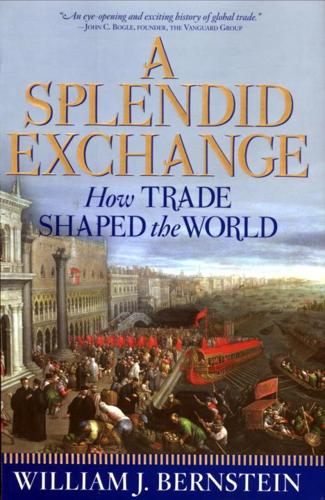
A Splendid Exchange: How Trade Shaped the World
by
William J. Bernstein
Published 5 May 2009
Brouwer's method-round the Cape of Good Hope, head west for seven thousand miles, then turn left-became standard procedure for European mariners for the next three centuries.22 The trick was knowing when to head north to thread the Sunda Strait between Java and Sumatra. John Harrison's marine chronometers, which could accurately measure longitude, would not come along for another 150 years, and many a Dutch and English ship failed to make the turn and got carried "beyond the bend" (as Coleridge's ancient mariner, cursed for shooting an albatross, had sailed south of Australia and shot straight into the Pacific).
…
Chinese sources suggest that Islam arrived in Canton in about 620, a full dozen years before the death of the Prophet.; Before the Chinese invented the magnetic compass, in around the twelfth century, mariners depended on celestial navigation; fog and overcast skies often proved as deadly as the fiercest storms. Although sailors since Greek times knew how to measure latitude, accurate determination of longitude did not become possible until the eighteenth century. The constant companion of the medieval traveler on the open seas was terror. As vividly recounted by a fifth century Chinese pilgrim who had voyaged to India and back: The Great Ocean spreads out over a boundless expanse. There is no knowing east from west; only by observing the sun, moon, and stars was it possible to go forward.
…
Two decades before, the Treaty of Tordesillas had moved the demarcation line eight hundred miles to the west of the original papal line in order to protect Portuguese claims in Africa. Magellan told the Spanish that Portugal would now have to pay the piper; since the treaty bisected the globe, the dividing line in the eastern hemisphere had also moved eight hundred miles to the west, to what is now about 135 degrees east longitude. In Magellan's considered opinion, this shifted the Spice Islands into the Spanish zone. Within a few months of his arrival in Spain in the fall of 1517, he had secured backing for his plan, and two years later his multinational crew launched into the Atlantic on the most astonishing, and nearly the most deadly, of all the voyages of discovery.
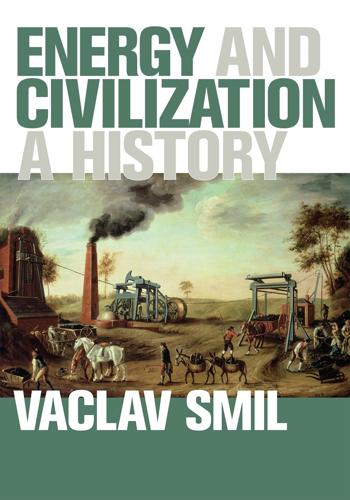
Energy and Civilization: A History
by
Vaclav Smil
Published 11 May 2017
Perhaps the best illustration of such a failure was the inability to determine longitude. By the beginning of the eighteenth century, fully rigged sail ships were efficient converters of wind energy and Europe’s potent empire-building tools, but their captains still could not find their longitude. As summed up in a petition presented by English captains and merchants to the Parliament in 1714, too many ships were delayed and many lost. Because Earth’s rotation amounts to about 460 m/s on the equator, finding the longitude requires chronometers that would lose no more than a fraction of a second a week if a ship was to be positioned with an error smaller than a couple of kilometers after a journey of two to three months.
…
Because Earth’s rotation amounts to about 460 m/s on the equator, finding the longitude requires chronometers that would lose no more than a fraction of a second a week if a ship was to be positioned with an error smaller than a couple of kilometers after a journey of two to three months. In 1714 an act of the British Parliament offered up to £20,000 for such an achievement. The reward was finally given to John Harrison (1693–1776) in 1773 (Sobel 1995). As far as fuels are concerned, history would have taken a different course if coal had been used merely as a substitute for wood in open fireplaces, or if crude oil use had remained limited to kerosene for lighting. In most cases it has not been the access to abundant energy resources or to particular prime movers that made the long-term difference.
…
Scientific American 242 (1): 138–148. Smith, P. C. 2015. Mitsubishi Zero: Japan’s Legendary Fighter. Barnsley: Pen & Sword Books. Smith, N. 1978. Roman hydraulic technology. Scientific American 238:154–161. Smythe, R. H. 1967. The Structure of the Horse. London: J. A. Allen & Co. Sobel, D. 1995. Longitude: The True Story of a Lone Genius Who Solved the Greatest Scientific Problem of His Time. New York: Penguin. Sockol, M. D., D. A. Raichlen, and H. Pontzer. 2007. Chimpanzee locomotor energetics and the origin of human bipedalism. Proceedings of the National Academy of Sciences of the United States of America 104:12265–12269.
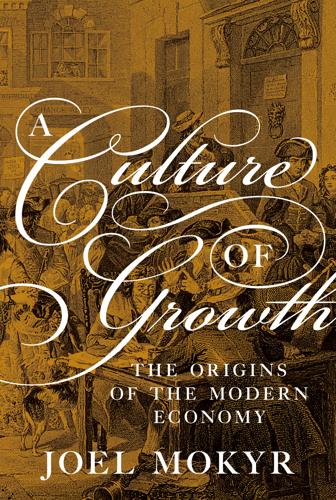
A Culture of Growth: The Origins of the Modern Economy
by
Joel Mokyr
Published 8 Jan 2016
His ideas were widely implemented and led to military reforms in the Austrian and French artillery.6 An example of a vexing practical problem that the advances in both propositional and prescriptive knowledge between 1500 and 1700 helped solve was the measurement of longitude at sea. The issue had been on the forefront of natural philosophy, and some of the greatest minds had worked tirelessly to solve it using new insights in astronomy and the new tools that had become available. Galileo, for one, hoped to use his discovery of the moons of Jupiter in determining longitude. The invention of the spiral-spring balance in watches by two of the best minds in the seventeenth-century, Huygens and Hooke, was another contribution to this effort.
…
There can be no doubt that in a purely artisanal world, evolutionary sequences of microinventions did take place that led to considerable technological progress, both product and process innovation. Moreover, some of the more interesting “great inventors” of the age—starting with Newcomen and his assistant John Calley, the clockmaker John Harrison and the instrument maker James Watt—were skilled artisans themselves. Yet artisans, unless they were as unusually gifted and well educated as the brilliant inventor Jacques de Vaucanson (1709–1782) or the ingenious French armorer and inventor Edme Régnier (1751–1825), were good at making incremental improvements to existing processes, not in expanding the epistemic base of the techniques they used or applying state-of-the-art scientific knowledge to their craft.
…
Yet again: without any input from scientifically trained chemists such as Scheele and Berthollet, it may be doubted that chlorine bleaching would have evolved when it did (Musson and Robinson, 1969, pp. 251–337). Wootton (2015, p. 489) remarks that early modern science solved two of the most difficult problems it set for itself: the calculation of the trajectory of a projectile, and the determination of longitude at sea. I would add to that a third: the means of preventing smallpox, first through inoculation, and later by vaccination. Much depended on the capabilities of eighteenth-century science and mathematics to come to grips with difficult problems of energy, materials, and biology. When it could be done, however, it was successful.
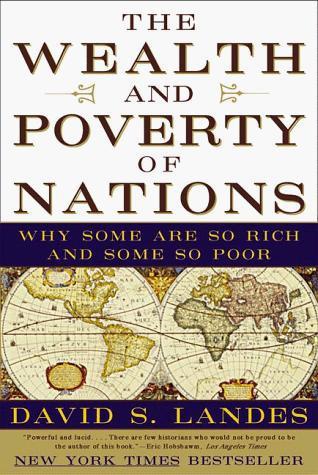
The Wealth and Poverty of Nations: Why Some Are So Rich and Some So Poor
by
David S. Landes
Published 14 Sep 1999
So insensible were the British to the value of such intelligence that he was well received at foundries and forges in Sheffield and the Northeast. His memoranda, later published, still make a valuable source of information on the techniques of his time.* The same was true of the British advances in chronometry, the key to superior navigation: in 1769, the Board of Longitude allowed French visitors to open and examine the revolutionary marine clocks of John Harrison on the assumption that these should contribute to all of mankind. (Harrison, when he learned of this, threw a fit.)2 Some places and trades were not so welcoming. In Birmingham, a center of metal trades, every maker had his knacks and tricks. Craftsmen there were rationally paranoiac in their conviction that every stranger was an enemy.
…
These advances substantially enhanced the advantage that horological technology gave to Europe. What had long been an absolute monopoly of knowledge remained an effective monopoly of performance. No one else could make these instruments or do the kinds of work that depended on precision timekeeping. The most important of these, politically as well as economically: finding the longitude at sea. 15 Britain and the Others And in Europe, why Britain? Why not some other country? On one level, the question is not hard to answer. By the early eighteenth century, Britain was well ahead—in cottage manufacture (putting-out), seedbed of growth; in recourse to fossil fuel; in the technology of those crucial branches that would make the core of the Industrial Revolution: textiles, iron, energy and power.
…
Where, then, should their sympathies go? CHAPTER 6 1. On the psychological and physical significance of Bojador, see Randies, “La signification.” 2. Quoted in Huyghe, Coureurs d’épices, p. 121. 3. On the special navigational problems of the South Atlantic, see Landes, “Finding the Point at Sea,” in Andrewes, ed., The Quest for Longitude; and Seed, Ceremonies of Possession, ch. 4: “A New Sky and New Stars.” This latter is a superb treatment of the scientific basis for Portuguese oceanic navigation and discovery. 4. Zacut was the author of the Almanach Perpetuum (1478), which worked out the position of the sun for each day at each latitude.

The Most Powerful Idea in the World: A Story of Steam, Industry, and Invention
by
William Rosen
Published 31 May 2010
That particular guild was not a true medieval organization; it had been founded “only” in 1631,6 just in time to define its exclusive franchise as embracing not only clocks but all forms of mathematical instruments. Partly as a result, they were considerably more welcoming of innovation than the more ancient organizations; when Watt arrived in London, their most illustrious member, John Harrison, was not only improving on his prizewinning marine chronometer, which he had invented as a solution to the problem of calculating longitude at sea, but also had previously created new versions of both clock escapements and pendulums. Unfortunately for Watt, Harrison’s guild was just as jealous of their territorial prerogatives as any thirteenth-century goldsmith; their bylaws prohibited any member from employing—and, especially, training—any “foreigners, alien or English”7 unless they were bound to the member as apprentices.
…
said the Baron, sitting in his hall, “But iron—cold iron—is master of them all.” * And, to be fair, the “Struve Geodetic Arc,” which consists of thirty-four cairns, obelisks, and rocks-with-holes-drilled-in-them along a fifteen-hundred-mile chain of survey triangulations running from Ukraine to Belarus, and commemorating the nineteenth-century measurement of a longitude meridian. The work of the astronomer Friedrich Georg Wilhelm Struve, it was indeed a noble and memorable achievement, but it draws considerably fewer tourists than, say, Stonehenge. * The conventional archaeological sequence that leads from stone to bronze to iron “ages” has its critics. The fact that one seems inevitably to follow the other is puzzling on the face of it, given that iron is far easier to find than copper.

Bourgeois Dignity: Why Economics Can't Explain the Modern World
by
Deirdre N. McCloskey
Published 15 Nov 2011
Or at least he could do pretty well as a clockmaker or spinning-machine mechanic. In Britain and its offshoots the career of the enterprising bourgeois or the skilled worker, in the fashion of Napoleon’s army or Nelson’s navy, was open to talent. John Harrison (1693–1776), the inventor of the marine chronometer, which solved by machine the problem of finding longitude in the wideness of the sea, against the arrogantly enforced demand by the elite that it be solved in the heavens by elite astronomy, was a rural Lincolnshire carpenter. His first clock was made of wood.32 Similarly, Maudslay of the screw-making machine, two year younger than Napoleon and thirteen years younger than Nelson, began work at twelve filling cartridges at the Royal Arsenal, becoming then a blacksmith, and by age eighteen a locksmith, and more.
…
The Bourgeois Revaluation liberated and dignified ordinary people making betterments. The egalitarian liberalism against the Great Chain of Being so characteristic of Holland, Britain, and most of all the United States encouraged technology more than it encouraged elite science. The methodical passion of a figure like John Harrison, the carpenter of Lincolnshire making one excellent clock after another until he achieved the marine chronometer, is typical. So, too, Franklin the candle-maker’s apprentice. Wedgwood the potter’s apprentice. Edison the railway telegrapher. That is, the belief in (that is, loyalty to) science, progress, equality, individual liberty, social dignity, having a go, were all of a piece.
…
Aside from the “mysterious and isolated wonder” of a tenth-century plotting of planetary inclinations, the political scientist and graphing guru Edward Tufte observes, the graph appeared surprisingly late in the history of counting. Cartesian coordinates were “invented” by Descartes himself in 1637, unifying geometry and algebra, perhaps from the analogy with maps and their latitudes and longitudes. (Much of this was invented centuries before in China, though the Europeans were innocent of the fact.) But graphical devices for factual observations, as against the plotting of algebraic equations on Cartesian coordinates, were first invented by the Swiss scientist J. H. Lambert in 1765 and more influentially by the early economist William Playfair in two books at the end of the eighteenth century, The Commercial and Political Atlas, 1786 (the time series plot and the bar chart) and The Statistical Breviary Shewing on a Principle Entirely New the Resources of Every State and Kingdom of Europe, 1801 (the pie chart; areas showing quantities; exhibiting many variables at one location), “applying,” as Playfair put it, “lines to matters of commerce and finance.”15 Contour lines for heights on maps were only invented for Europeans in 1774 by the pioneering Scottish geologist Charles Hutton, in aid of a survey of a Scottish mountain.16 Obsession with accurate counting in Europe dates from the seventeenth century.
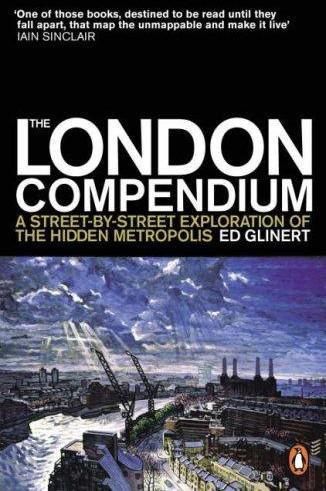
The London Compendium
by
Ed Glinert
Published 30 Jun 2004
At the second congress, held in Rome in 1875, France announced it would be happy to accept Greenwich as the setting if Britain adopted the metric system. Britain agreed, but more than 120 years later the metric system has still not been fully implemented. Even though Greenwich was given the 0° longitude setting, calculations in 1949 showed that the Greenwich meridian, rather than having a longitude of exactly 00° 00’ 00’’, measured 00° 00’ 00.417’’ East, an anomaly which had arisen because the seventh Astronomer Royal, George Airey, had measured 0° longitude in the 1840s in a different room of the observatory from the one originally chosen for the task. As a consequence the Greenwich Meridian was moved 26.39 feet. The observatory moved to Herstmonceaux, Sussex, in the 1960s and the Greenwich buildings are now used by the National Maritime Museum.
…
John Flamsteed, the first Astronomer Royal, worked from sheds in the observatory garden (now Quadrant House and Sextant House), erecting a telescope on the balcony that was fixed to observe the movement of Sirius, day and night, proving that the earth rotates at a constant speed. In 1714 the authorities offered a lucrative prize to anyone who could construct a longitudinal watch and the winner was John Harrison (1693–1776), whose first timepiece, H1, completed in 1735, kept time at sea on the Centurion with considerable accuracy, despite the movement of the ship, the regular changes in the temperature and the scepticism of Isaac Newton. Centurion later sailed without H1, a factor which may have been instrumental in its sinking with the loss of seventy lives en route to the island of Juan Fernandez.
…
Gilbert and George’s studio (1968–), No. 12 The well-known performance artists Gilbert Proesch and Flete George Charles Ernestine Passmore, better known as Gilbert and George, moved to Spitalfields in the late 1960s, when the area was at its lowest ebb and one of the least fashionable enclaves of the capital (‘it was like walking into a book in the nineteenth century: amazing light, and few people in the street, more like literature than reality’, according to Gilbert), but decades later found that their locale had become one of the most fashionable places in central London, thanks to the surrounding gentrification and the influx of artists into Spitalfields and Shoreditch. Nos. 4–6 Built as a silk merchant’s house by Marmaduke Smith in 1726, Nos. 4–6 – used in the late-twentieth-century television version of Dava Sobel’s Longitude – is grander than most of the other properties on the street and features a rusticated central doorway, carved surround, cantilevered canopy and full height Doric pilasters, as well as being decorated internally with much mahogany, used because the duty on the wood had been lifted only four years previously.
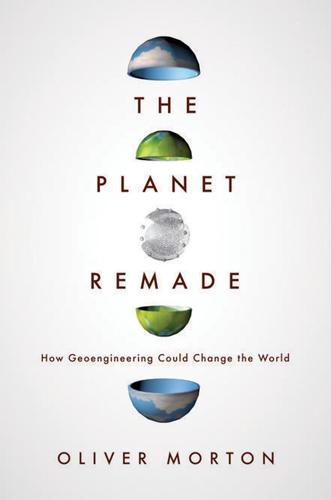
The Planet Remade: How Geoengineering Could Change the World
by
Oliver Morton
Published 26 Sep 2015
Now as then, computer models cut the earthsystem up into chunks, building the ocean and the atmosphere up as a succession of layers, dividing each layer up into a grid of cells more or less along lines of latitude and longitude (though at the poles it gets trickier). The state of each cell at a given point in time is calculated on the basis of the radiation flowing through it, the clouds it contains and what was going in the neighbouring cells just beforehand using fundamental physics. The modern ones, though, cut the world into far more cells than their predecessors did, and can also cut time into shorter steps. The British Met Office’s HadGEM3 climate models can offer their users up to 85 layers of atmosphere and 75 layers of ocean and cells measuring less than one degree of latitude and longitude on a side; this requires a computer capable of hundreds of ‘teraflops’ – which is to say, one that can make almost a million billion calculations a second.
…
Further gratitude is due as ever to Simon Schaffer, Anita Herle, Eva Herle Schaffer and, in absentia, Sheila Schaffer, for the retreat in Brighton and much more. Similar thanks for familial support go to three generations of Bacons and a wide range of Mortons and Hyneses. Life is always enriched by John Harrison; I am sorry not to be able to share the finished product with Dominic Prior – or for that matter Iain Banks. Many thanks to Laura Joanknecht. The baristas and other staff of many cafés have put up with me as I cluttered up their tables while writing; particular thanks to those of the Redwood Café, Brighton, the Southsea Coffee Company, Southsea and, in Greenwich, the Plumtree Café and, most frequently of all, the Buenos Aires Café.
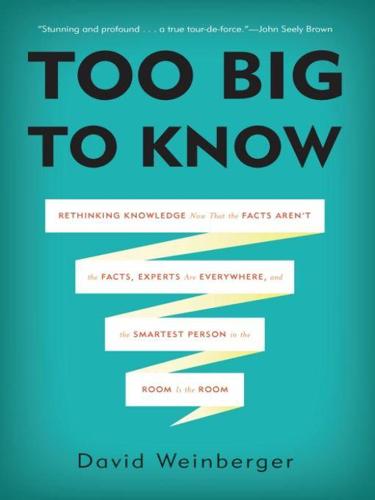
Too Big to Know: Rethinking Knowledge Now That the Facts Aren't the Facts, Experts Are Everywhere, and the Smartest Person in the Room Is the Room
by
David Weinberger
Published 14 Jul 2011
For example, Ed Melcarek, who was earning a living installing HVAC systems, won $25,000 for figuring out a novel way of getting fluoride into toothpaste tubes for Colgate-Palmolive: Ground the tube and give a positive electric charge to the fluoride power.25 As Karim Lakhani, a professor at Harvard Business School, has pointed out, such contests occurred well before the advent of the Net. In 1714, the British Parliament offered £20,000 to the first person who could come up with a way of determining longitude at sea.26 John Harrison was finally granted the money in 1773, at the age of seventy-nine, after a literal lifetime of work on the project.27 But before the Internet, it pretty much took an act of Parliament to spread word of a contest beyond the bounds of the experts in the field. Now, the Internet’s looseness with information has enabled contests to become a normal way in which knotty problems can be solved.

The Pineapple: King of Fruits
by
Francesca Beauman
Published 22 Feb 2011
My evidence for John Michael Wright being the artist includes the following points: There is another portrait by Wright of Charles II with the sitter’s head in exactly the same position as in the pineapple painting; there is a portrait by Wright of Lady Catherine Cecil and James, 4th Earl of Salisbury, in which a pomegranate is featured in almost exactly the same position as the pineapple in the pineapple painting; Wright was a friend of John Evelyn’s, a friend of John Rose’s; it explains why he sometimes signed himself ‘the king’s painter’; on 27 July 1676 he mentioned in a letter to Sir Walter Bagot that ‘I am told the King will sitt to my great picture for the Citty this next moneth’ but the picture has not yet been traced; and so on. 38 W. S. Lewis, II. 200. 39 Quoted in Stephen Coote, Royal Survivor: a Life of Charles II (1999) 207. 40 John Prest, The Garden of Eden: the Botanic Garden and the Re-creation of Paradise (1981). 41 John Harrison and Peter Laslett, The Library of John Locke (1965) 27. 42 Peter H. Nidditch (ed.), An Essay Concerning Human Understanding, by John Locke (1975) 424. Thanks to Dr Hannah Dawson. 43 Christopher De Rochefort 58. 44 Richard Ligon 82; Clayton Colman Hall (ed.), Narratives of Early Maryland 1633–1684 (1925) 36.
…
I hope that by the end of the book, you will feel that you have really got to know the pineapple – its strengths and its weaknesses, its likes and dislikes, its needs and wants. For this is, in the truest sense of the word, its biography. 1 ‘Every fruit has its secret’ D. H. Lawrence (1923)1 Brazil. The rainforest. Screeeeeeeeeeeeech! 55° west longitude at the Equator. Crack! About five o’clock in the afternoon. Drip. Drip. Drip. It has rained every day for forty days. Even the sloths are impelled to seek shelter. Off they lollop to the only canopy they know, the trees, many up to 120 feet tall. Light is scarce. Occasionally a solitary beam weaves its way through the leaves to reach the muddy soil, but mostly the animals that live on the ground – the armadillos, jaguars, beetles and the rest – manage without this luxury.
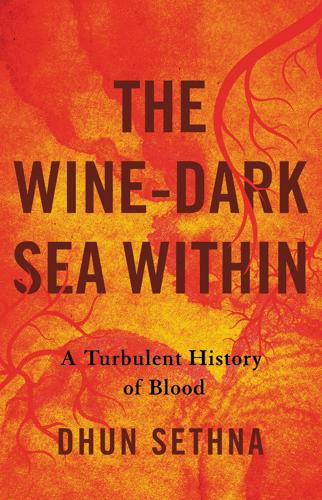
The Wine-Dark Sea Within: A Turbulent History of Blood
by
Dhun Sethna
Published 6 Jun 2022
Treatises found among his posthumous papers on heat and electricity as well as the mechanical and dynamic sciences heralded discoveries made a half century later. Cavendish’s success as a superb experimenter lay in his application of a new “balance” made exclusively for him by John Harrison, the lone carpenter and genius of chronometer fame who helped solve the problem of longitude at sea. With his new gadget, Cavendish was the first to determine the weights of equal volumes of gases. He next established an unequivocal connection between air and a component of the atmosphere for which the French chemist Chaptal had proposed the name “nitrogen.”
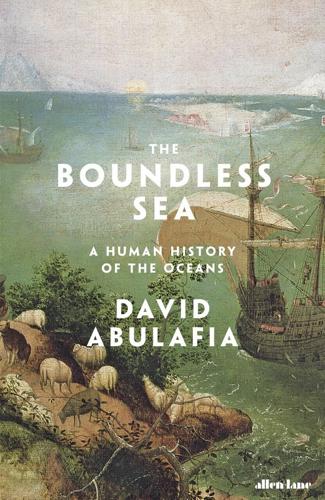
The Boundless Sea: A Human History of the Oceans
by
David Abulafia
Published 2 Oct 2019
He was instructed to bear in mind ‘the Honour of this Nation as a Maritime Power’, which ‘may tend greatly to the advancement of the Trade and Navigation thereof’.41 One important feature of Cook’s second and third voyages, of 1772 and 1776, was the testing of John Harrison’s chronometer, a clock that was to prove accurate enough to make it possible to measure longitude; latitude was a much more straightforward problem, but dealing with the measurement of distance in the direction the earth turned was far more complicated. His use of Harrison’s timepiece allowed him to chart the South Sea islands with impressive accuracy.
…
Evidently, Polynesian navigators perfected the art of sailing against the wind; they needed to ensure that they could return from their explorations, and the best way to do that was to challenge the winds and currents, tacking back and forth, moving slowly but securely. As they developed these techniques over many centuries, they also learned the art of dead reckoning, judging distance as they sailed to gain some sense of longitude; they appear to have found this easier to do than European sailors, who had to await the invention of the chronometer in the eighteenth century to be sure of their longitude. Tupaia, a Polynesian navigator who accompanied Captain Cook, astonished Cook’s companions by his almost instinctive awareness of where the ship stood, without instruments or written records. The Polynesian navigators proved that one can solve some challenging problems without any technology at all, just the super-computer of the human brain.38 As for latitude, much easier to judge, they observed the stars: ‘to travel between the south of the main Solomons and the Santa Cruz group was as simple as following a zenith star path – east or west – with the seasonal winds.’39 Knowing the stars was the key to successful navigation.
…
Far from keeping the English out, he was taken prisoner and carried off to London, where he, Queen Elizabeth and Walter Raleigh discoursed together in Latin on the geography of the Pacific Ocean.9 The infinitely patient Mendaña was not able to leave Peru until 1595, by which time fortune’s wheel had turned again in his favour – there was a new viceroy, who was excited by the plans, and the royal letter of approval made it hard to refuse Mendaña’s requests for help. Mendaña’s first expedition was a failure; this expedition was a disaster. One fundamental problem was that it was easy enough to determine latitude, with the help of the sun, but impossible to fix longitude until precise chronometers were invented in the eighteenth century.10 As a result, he was none too clear where he had arrived, and, after passing through the Marquesas Islands, he installed himself on the outer edges of the Solomon Islands, setting up the colony of Santa Cruz, where his followers managed to hang on for a while until they were defeated by disease and by the hostility of the islanders.
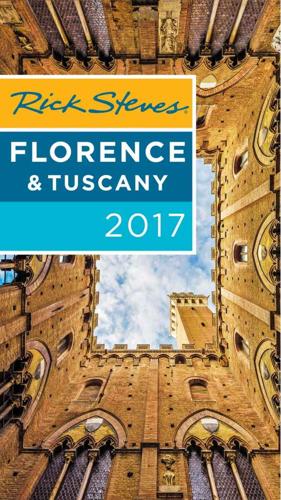
Rick Steves Florence & Tuscany 2017
by
Rick Steves
Published 8 Nov 2016
By measuring time accurately, sailors could not only establish their latitude (north-south on the globe), but also their longitude (east-west). In the 1700s, with overseas trade booming, there was a crying need for an accurate and durable clock to help in navigation. Sighting by the stars told you your latitude but was less certain on whether you were near Florence, Italy (latitude 44), or Portland, Maine (also latitude 44). You needed a way to time Earth’s 24-hour rotation, to know exactly where you were on that daily journey—that is, your longitude. Reward money was offered for a good clock that could be taken to sea, and scientists sprang into action. The longitude problem was finally solved—and a £20,000 prize won—by John Harrison of England (1693-1776), who developed the “chronometer” (not in this museum), a spring-driven clock that was set in a suspension device to keep it horizontal.
…
The longitude problem was finally solved—and a £20,000 prize won—by John Harrison of England (1693-1776), who developed the “chronometer” (not in this museum), a spring-driven clock that was set in a suspension device to keep it horizontal. It was accurate within three seconds a day, far better than any clock displayed here. • Room VI (The Science of Warfare) displays not weapons but surveyors’ tools, crucial for plotting the trajectory of, say, a cannonball. Next up is one of the museum’s highlights. Room VII: Galileo’s New World Galileo Galilei (1564-1642) is known as the father of modern science. His discoveries pioneered many scientific fields, and he was among the first to blend mathematics with hands-on observation of nature to find practical applications.
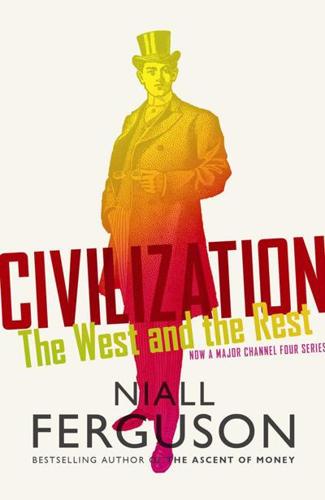
Civilization: The West and the Rest
by
Niall Ferguson
Published 28 Feb 2011
It was always more likely that the latter, with its distinctive culture of experimental tinkering and patient observation, would produce the technological advances without which there could have been no Industrial Revolution (see Chapter 5).45 The line that led from Newton’s laws to Thomas Newcomen’s steam engine – first used to drain the Whitehaven collieries in 1715 – was remarkably short and straight, though Newcomen was but a humble Dartmouth ironmonger.46 It is not accidental that three of the world’s most important technological innovations – James Watt’s improved steam engine (1764), John Harrison’s longitude-finding chronometer (1761) and Richard Arkwright’s water frame (1769) – were invented in the same country, in the same decade. When Newton died in March 1727 his body lay in state for four days at Westminster Abbey, before a funeral service in which his coffin was borne by two dukes, three earls and the Lord Chancellor.
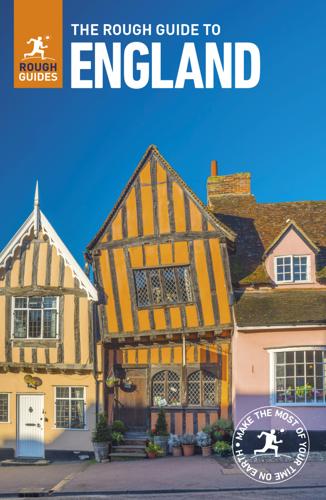
The Rough Guide to England
by
Rough Guides
Published 29 Mar 2018
Greenwich’s greatest claim to fame, of course, is as the home of Greenwich Mean Time (GMT) and the Prime Meridian. Since 1884, Greenwich has occupied zero longitude, the Meridian Line marked by the strip in the observatory’s main courtyard. The observatory housed the first Astronomer Royal, John Flamsteed, whose chief task was to study the night sky in order to discover an astronomical method of finding the longitude of a ship at sea. Beyond the Octagon Room, where the king used to show off to his guests, are the Time galleries, which display four of the clocks designed by John Harrison, including “H4”, which helped win the Longitude Prize in 1763. The free Astronomy Centre galleries give a brief rundown of some of the big questions of the universe, and you can also watch one of the thirty-minute presentations in the Planetarium.
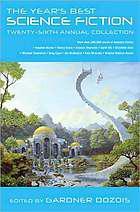
The Year's Best Science Fiction: Twenty-Sixth Annual Collection
by
Gardner Dozois
Published 23 Jun 2009
If you like zombies (which were so frequently encountered this year, even in the science fiction anthologies, that they seemed to be taking over the field), you’ll want The Living Dead (Night Shade Books), edited by John Joseph Adams and packed full of zombie stories by Dan Simmons, Michael Swanwick, George R.R. Martin, Stephen King, Andy Duncan, and others. Another attempt at subgenre definition and canon-forming was The New Weird (Tachyon), edited by Ann and Jeff VanderMeer, a mixed anthology of reprint stories (the best by M. John Harrison, Clive Barker, and Jeff Ford), some original material, critical essays, and transcribed blog entries which had some good stuff in it but which ultimately left me just as confused as to what exactly The New Weird consisted of when I went out as I’d been when I went in. Good work was also to be found in The Best of Jim Baen’s Universe II (Baen), edited by Eric Flint and Mike Resnick, and Orson Scott Card’s Intergalactic Medicine Show, Volume 2 (Tor), edited by Edmund R.
…
The 2008 John W. Campbell Memorial Award was won by In War Times, by Kathleen Ann Goonan. The 2008 Theodore Sturgeon Memorial Award for Best Short Story was won by “Finisterra,” by David Moles, and “Tideline,” by Elizabeth Bear (tie). The 2007 Philip K. Dick Memorial Award went to Nova Swing, by M. John Harrison. The 2008 Arthur C. Clarke award was won by Black Man, by Richard Morgan. The 2007 James Tiptree, Jr. Memorial Award was won by The Carhullan Army, by Sarah Hall. The Cordwainer Smith Rediscovery Award went to Stanley G. Weinbaum. Death hit the SF and fantasy fields hard again this year.
…
She was pinned back into a heavily padded seat: I did not doubt that I was looking at the pilot of one of the ships racing to intercept us. Much of her face was hidden under a globular black helmet, with a red-tinted visor lowered down over her eyes. On the crown of the helmet was a curious symbol: a little drawing of the Earth, overlaid with lines of latitude and longitude, and flanked by what I took to be a pair of laurel leaves. She was speaking into a microphone, her words coming over the bridge speaker. I wished I had studied more dead languages at the academy. Then again, given my lack of success with Arabic, perhaps I would still not have understood her Latin either.
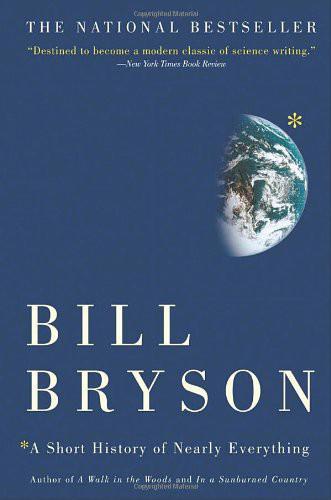
A Short History of Nearly Everything
by
Bill Bryson
Published 5 May 2003
Bouguer and La Condamine had tried this on Peru's Mount Chimborazo, but had been defeated by both the technical difficulties and their own squabbling, and so the notion lay dormant for another thirty years until resurrected in England by Nevil Maskelyne, the astronomer royal. In Dava Sobel's popular book Longitude, Maskelyne is presented as a ninny and villain for failing to appreciate the brilliance of the clockmaker John Harrison, and this may be so, but we are indebted to him in other ways not mentioned in her book, not least for his successful scheme to weigh the Earth. Maskelyne realized that the nub of the problem lay with finding a mountain of sufficiently regular shape to judge its mass.
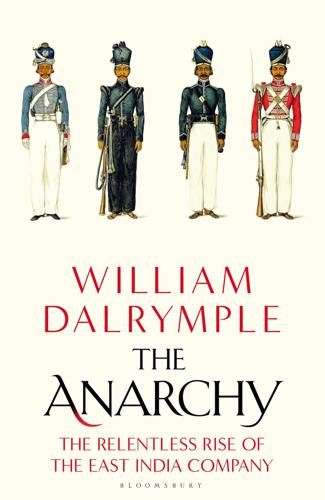
The Anarchy: The Relentless Rise of the East India Company
by
William Dalrymple
Published 9 Sep 2019
* Over £4 million today. * The Reverend Nevil Maskelyne was, of course, the villain of Dava Sobel’s bestseller Longitude: The Story of a Lone Genius Who Solved the Greatest Scientific Problem of His Time, London, 1995. Here Maskelyne is painted, as one critic put it, as ‘a dull but jealous and snobbish Cambridge-trained cleric, whose elitism and privileging of astronomy over mechanical inventiveness prejudice him against the Yorkshire-born and Lincolnshire-bred [hero of the book, John] Harrison. He is jealous, petty and obstructive, putting potential personal gain over disinterested judgement.’ † As well as generous stock dividends, the other very valuable thing that the directors and the servants in India had to offer was, of course, patronage: that is, appointments to lucrative places in India for the connections of politicians.

Europe: A History
by
Norman Davies
Published 1 Jan 1996
The craft of clockmakers grew out of the earlier guilds of locksmiths and jewellers. Famous names include Jacques de la Garde of Blois, maker of the first watch (1551); Christian Huygens (1629–95) of the Hague, inventor both of the pendulum and of the spiral-balance hairspring; John Arnold, Thomas Earnshaw, and John Harrison (1693–1776), masters of maritime chronometry; Julien Leroy (1686–1759), clockmaker to Versailles; Abraham-Louis Bréguet (1747–1823), inventor of the self-winding montre perpetuelle; and Edward John Dent (1790–1853), designer of Big Ben. Antoni Patek of Warsaw and Adrienne Philippe of Berne joined forces in 1832 to found Patek-Philippe, the leading Swiss firm of the day.
…
The Great European Plain stretches without interruption for over 2,400 miles (4,000 km) from the Atlantic to the Urals. It is Europe’s dominant territorial feature. Indeed, since the Urals form little more than a gentle bridge, the plain may be regarded as an extension of the still greater expanse of lowland stretching to the Verkhoyansk Ridge of eastern Siberia. At the longitude of the Urals it spans the 1,200 miles (2,000 km) between the Barents Sea and the Caspian. Between the coast and the hills in the Low Countries, it narrows to less than 200 km. Almost all the major rivers of the plain flow on a north-south axis, thereby creating a series of natural breaks to east-west traffic and dividing the traverse of the plain into six or seven easy stages.
…
Newtonian physics sanctified the idea that the whole universe was one great ‘celestial clock’; and it has taken the greatest of modern minds, including Einstein and Proust, to show how unnatural the mechanistic perception of time really is.2 [COMBRAY] [e = mc2] Landmarks in the evolution of clockwork included miniaturization, which gave rise to domestic clocks in the fifteenth century, and to personal watches in the sixteenth; the pendulum (1657), which greatly increased reliability; the marine chronometer (1761), which solved the long-standing problem of measuring longitude at sea; and the keyless mechanism (1823), which led to popular pocket and wrist watches. The ultimate timepiece, an atomic clock accurate to one second in 3,000 years, was built at Britain’s National Physical Laboratory in 1955. Over the centuries, clockmaking developed from a highly specialized craft to a mass production industry.